EDEN
A Story of Love and Tragedy
CONNECTING WITH ANGELS
by Scott Guerin, Ph.D. & Nichole Bigley


by Scott Guerin, Ph.D. & Nichole Bigley

LOSING RELATIONSHIP IN THE MIDST OF FINDING OURSELEVES
by Emilie Macas

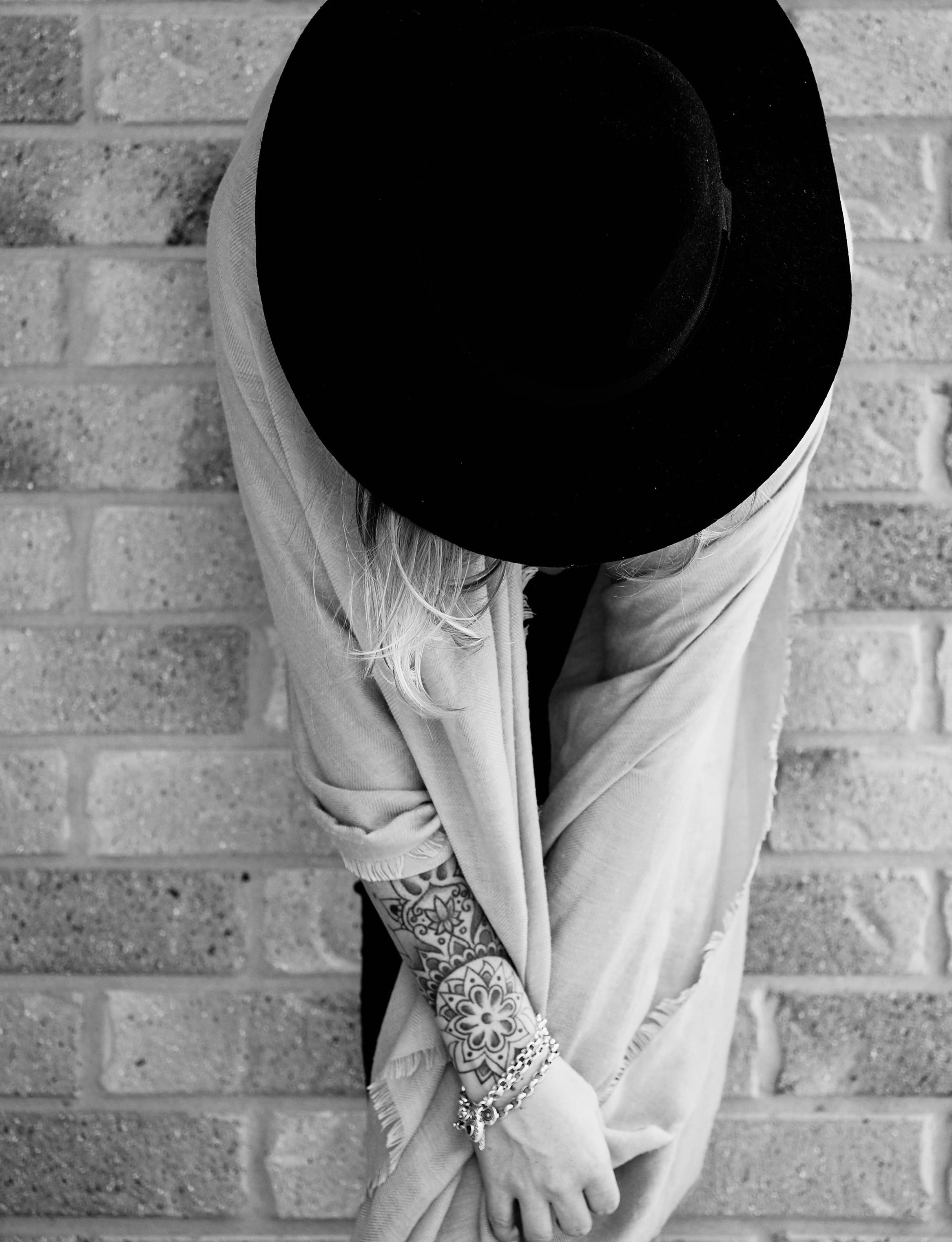





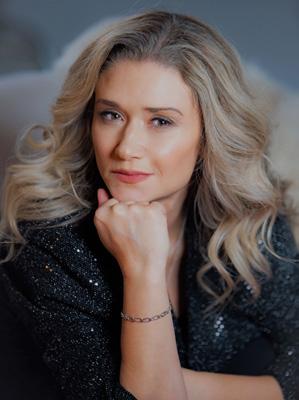











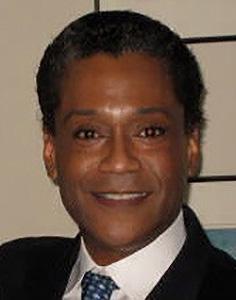
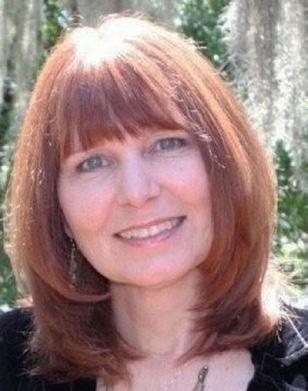






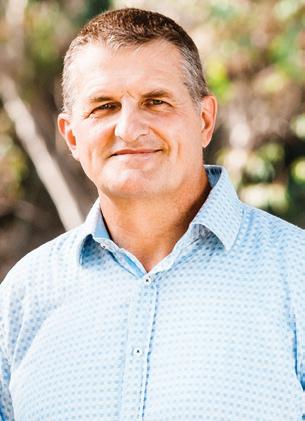

The Eden Magazine is a free online publication is your guide to healthy living, spiritual awareness, compassion and love for all living beings, holistic lifestyle, mindfulness, organic living, positive thinking, sustainability, and personal development
Founder & Editor-in-Chief
Maryam Morrison
Executive Editor/Contributing Writer
Dina Morrone
Contributing Writers
Dulce Garcia-Morman
Susanna Schroadter
Alexia Melocchi
Emilie Macas
Jan Wakefiled
Joe Santos, Jr.
Sherri Cortland
Nikki Pattillo
Polly Wirum zee
Guest Writer
Philip Smith
Contributing Stylists + Makeup Artist
Edward Hakopian
Lisa Joy Walton
Graphics & Photography
JSquared Photography @j2pix (Los Angeles)
Artin Mardirosian (Nexision) (Los Angeles)
Benjamin D. Buren – AliveStudios.Com (Denver, SanFrancisco, Boston)
Sheri Determan (Los Angeles)
Greg Doherty (Los Vegas) Ben Rollins (Atlanta)
Web developer
Brad wallace https://bradwallacedesign.com/
325 N. Maple Dr. Po Box 5132 Beverly Hills, CA 90209
at www.theedenmagazine.com




58
BUILDING BONDS; WHY HEALTHY RELATIONSHIP MATTER MOST by susanna Schroadter
62
HAVE A LITTLE FAITH by Nikki Pattillo 68
EVOLUTION & WHY HEALTHY RELATIONSHIP MATTER MOST by Dulce Garcia-Morman
72
LOSING RELATIONSHIP IN TH MIDST OF FIND OURSELVES by Emilie Macas


78
Polly Wirum
JEWEL OF THE DESERT A FILM BY MARY APICK
92
PEACE AT HOME by Dorian Withrow 92 90 78 72 68 62






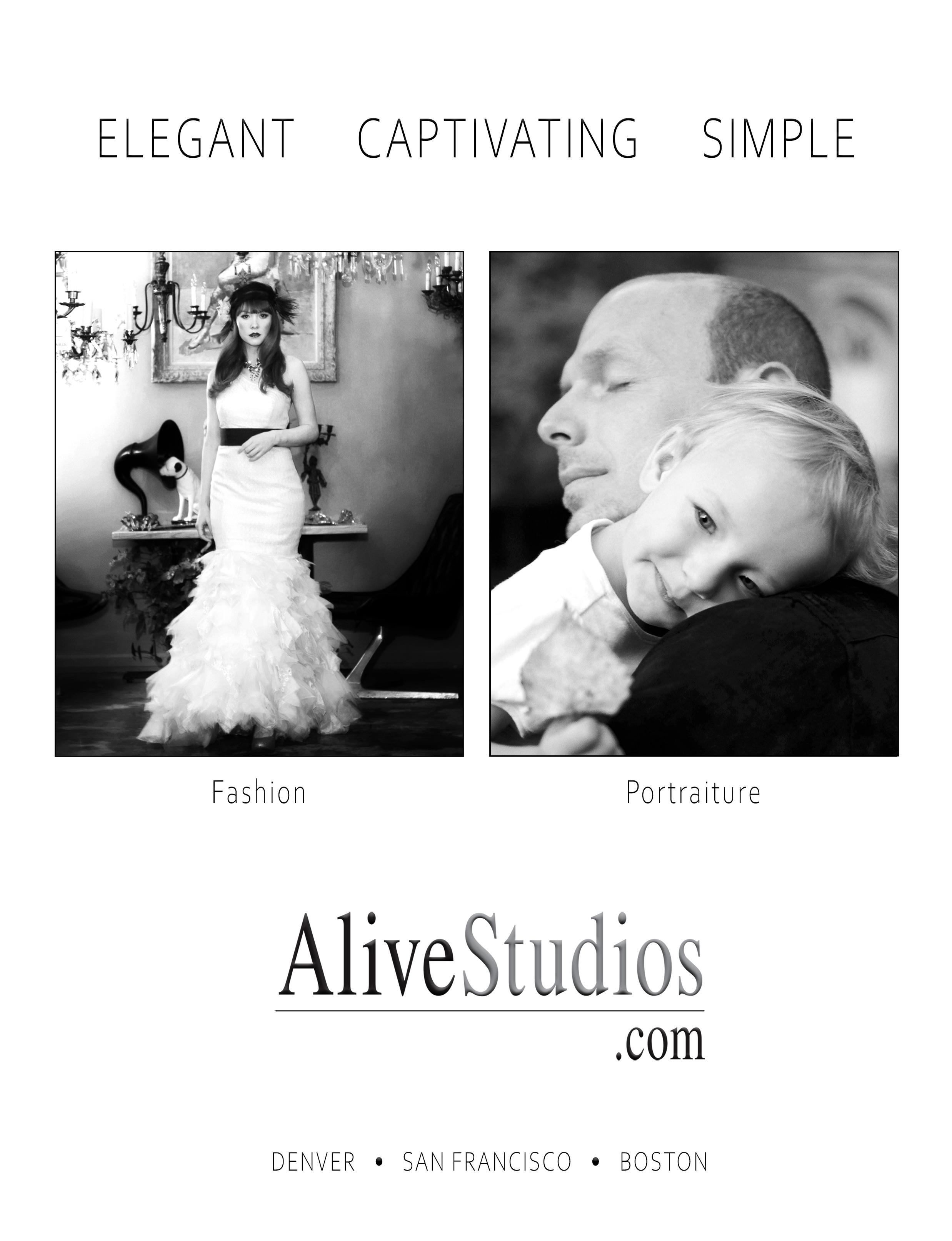

An excerpt from Looking for Angels: A Guide to Understanding and Connecting with Angels
by Scott Guerin, PhD & Nichole Bigley

by By

Our angels and guides work behind the scenes to guide and help us, to reawaken our gifts and align our spirit with our higher self in order to achieve the mission we set for ourselves before we came here to this planet.
AStarting Point
If a movie were made focusing on how angels are portrayed in the Bible, it would rival any action movie ever made. The range of characters would include large multiwinged creatures with many faces, animal arms, and legs descending in a cloud of smoke and fire to terrify audiences. Angels with superpowers of flight and strength engaging in massive battles would compete with any character that Marvel or DC Comics has to offer. Other family-friendly angels would be depicted as regular people, offering comfort and guidance or proclaiming good news to all humankind. This may seem dramatic, but as you will see, it comes close to the descriptions found in many of the world’s ancient sacred texts.
For some of you, these ideas will present a drastically different perspective
of angels from what you have known. We propose that humankind is moving into a new phase of spiritual development. People will become aware that they are fully human and fully divine, and they will experience this through more in-depth interactions with angels and their spirit teams.
Before we present how we can have modern-day relationships with these divine beings, a good place to start is to briefly review what religion has taught us about the spirit world. The Bible references angels, spirits, and related terms hundreds, if not thousands, of times. The word angel is mentioned approximately three hundred times in the Bible. The English word angelis is translated from the Hebrew word mal’ak and the Greek word angelos, both meaning “messenger.” The number of angels mentioned is actually much higher because other terms refer to angel-like beings: for example, the Hebrew words rûah, meaning “spirit,” or šamayim, meaning “heavenly ones.”
Ancient civilizations accepted the idea of angels, and they were a part of religious and cultural history throughout the world, with numerous stories and detailed descriptions of how angels interacted with humans. However, the presence of angels in society diminished over the centuries. The next question is, where did they go?
Part of the reason why angels became less visible within society is that the Scientific Revolution initiated a shift in thinking that overturned thousands of years of Greek and religious worldviews by replacing a qualitative with a quantitative view of nature. This view sees the world as a machine rather than an organism. In other words, Newtonian laws revealed that the physical world is made up of mechanical objects with predictable movements and motions that are able to be manipulated. As a result, spiritual and nonphysical realities, like angels, took a back seat to more “rational” and “scientifically grounded” theories. There is no room for angels in a machine.
The lack of visibility and awareness of angels in modern times does not mean they no longer exist. As noted earlier, the belief in angels is a fundamental requirement of Islam. Notable Islamic theologian Ibn Taymiyyah stated that while many scoff at the idea of angels, “All of humanity has generally affirmed the presence of [both] angels and demons ex-
cept a few rare cases in different nations. You would not find an entire culture deny them outright, only particular individuals or groups from amongst them.” Currently, numerous studies and surveys show a growing resurgence of spirituality worldwide, and with that has come a revival of interest in angels.
The modern-day understanding of angels explains that they are all here for the same reason: to help us stay connected to the Divine and navigate our life on Earth. Our angels and guides work behind the scenes to guide and help us, to reawaken our gifts and align our spirit with our higher self in order to achieve the mission we set for ourselves before we came here to this planet. Most people think they have one guardian angel or spirit guide, but we are not limited to just one team member. We have anywhere from five to upwards of one hundred or more around us at any given time.
Our spirit team is an eager and ambitious group because their soul purpose is to inspire and motivate us, reassure and console us in times of need, and even steer us away from danger when they can. In order to do this, they will send us messages and signs, remove obstacles, open doors, create opportunities, and offer solutions. Their job throughout all of this is to love and guide us during our lives in order to embody the frequency of love. Being in the frequency of love helps you remember and return to your soul’s innate intuitive abilities and basic instincts.


Dr. Scott Guerin, who has a doctorate in psychology focusing on human and spiritual development, is an acclaimed author and has been an adjunct professor at Kean University, New Jersey, for over twenty years.
His academic and healthcare career reflects his deep engagement with spiritual growth and health psychology. Passionate about spirituality and the great outdoors, Dr. Guerin enjoys triathlons, hiking, and adventures with his wife, Debbie, their sons, and their spirited dog, Izzy. He resides in northern New Jersey.

Sadhguru: In the Yogic understanding, there are 16 dimensions to the human mind. These 16 dimensions fall into four categories. These four categories are known as buddhi, manas, ahankara, and chitta. Buddhi is the intellect –the logical dimension of thought. Unfortunately, the modern education systems and modern sciences have largely limited themselves to buddhi. That is a buddhu (foolish) way of existence.
The Limitation of the Intellect Buddhi, or the intellect, cannot function without a certain bank of memory or data. Depending on the data you have, the intellect plays around. Suppose there are 10 gigabytes of memory in your memory system. Depending on how sharp your buddhi is, one person can produce, let us say, a trillion thoughts with these 10 gigabytes. Someone else can produce 10 trillion thoughts with the same 10 gigabytes of memory.
If you can think a little better than someone else, it is considered intelligence today. If someone says one thing and you can say ten things to that, you may be socially smart, but you are not any more intelligent. Unfortunately, in today’s systems of education and academics, everything is determined by this. If you can make more things out of it, you are considered intelligent, which is not true – you only have a sharper buddhi. The
buddhi will not take you beyond limits in any way because it can only function based on the data that is already there. It is not capable of accessing anything beyond that.
The next dimension is called manas. Manas is a complex amalgam of memory and has many layers to it. Manas is not just the brain – it is right across the body. Every cell in the body has a phenomenal memory – not just of this life but of millions of years. Your body clearly remembers how your forefathers were a million years ago. Top to bottom, there is manas – this is called manomaya kosha.
What you call as your body and your mind are a certain accumulation of memory. It is because of memory – or you can call it information – that your body has taken the particular shape that it has. For example, if a man eats a piece of bread, the bread becomes a man. If a woman eats it, it becomes a woman. If a dog eats the same bread, it becomes a dog. That’s a smart piece of bread! No, it is not the bread but the kind of memory that one’s system carries that transforms bread into a man, woman, or dog.
Your very existence is an accumulation of memory. If we take away all the memory, you will cease to exist. This is what people mean when they talk about karma nashana – if you destroy all memory, the very being ceases to exist. That is a state of mukti because you are free from existence – you do not have to exist anymore because your very existence is memory.
There is memory and intelligence in every cell in the body, but no intellect. Intellect is only in the brain. In the English language, everything comes under one banner called “mind.” The idea that intelligence is only in the brain has produced human beings whose consciousness is seriously constipated. What is in the brain is intellect, not intelligence. Intelligence and memory are right across your body. But people have never been trained on how to use this intelligence. Instead, they use their intellect for everything. No wonder they are stressed out whatever job you give them. The whole weight is on only one dimension of the mind out of sixteen. It is like loading a sixteen-wheeler truck and trying to drive on only one wheel – you can imagine the stress! That is what today’s world is going through.
People may be using other dimensions of the mind marginally or unconsciously, but they are not trained to use them. They have only been trained to use their buddhi, or their intellect. They are very smart. They know everything about everything, but they do not know how to figure out their own life. They do not even know how to sit here peacefully and at total ease within themselves. If there is true intelligence, the first thing that you need to figure out is how to make life happen. You know how to make the world happen, but you do not know how to make your life happen. You do not

know how to conduct your mind, your energies, your emotions, or your body.
If you ask people to become fit, they become tight. If you ask them to live in a more natural way, they become fat. Where is the intelligence? There is only intellect. Intellect looks good only in comparison. Suppose you are the only person on the planet; your intellect will not mean anything. Only because there are a few idiots around you, you shine. By itself, intellect will not be of any consequence.
The intellect directly connects with the third dimension of your mind, called ahankara. Ahankara is sometimes translated as ego, but it is much more than that. Ahankara gives you a sense of identity. Once your ahankara takes on an identity, your intellect functions only in that context. It is important to function beyond the intellect because the intellect is seriously enslaved to your identity.
Our identities, such as belonging to a certain nation, community, or whatever else, are necessary for our survival in a particular society. But you cannot think beyond this because you are functioning only from your intellect, and the intellect takes its sustenance from ahankara. Only along the axis of ahankara can the intellect function. The intellect cannot transcend this because that is its nature. But there are other ways to know life beyond the identities we have taken on for our survival in the world.
The question is only about what is sustainable. If you want human beings to have a phenomenal experience within but without causing damage to themselves, you have to turn them inward.

The Cosmic Intelligence
The fourth category of the mind is called Chitta. Chitta is a mind without memory – pure intelligence. This intelligence is like cosmic intelligence – simply there. Everything happens because of that. It does not function out of memory – it simply functions. In a way, what you call the cosmos is a living mind. By “mind,” I do not mean mind in the sense of intellect. Chitta is the last point of the mind. It connects to the basis of creation within you. It connects you with your consciousness.
Chitta is always on – whether you are awake or asleep. Your intellect comes on and goes off. Many times it fails, even when you are awake. If Chitta or the intelligence within you was not always on, you could not stay alive. Try to conduct your breath with your intellect – you will go crazy. Chitta is keeping you alive, keeping you going, making life happen. If you touch this dimension of your mind, which is the linking point to one’s consciousness, you do not even have to wish for anything; you do not have to dream of anything –
the best possible thing that can happen to you will anyway happen.
The Divine Enslaved
When people touch this dimension of the mind, it is called ishwara pranidhana in Yoga. This means God becomes your slave – he works for you. You know, Yogis say, “Divine is my servant. He does everything for me.” In a way, otherwise, I would not be here. Once you know how to consciously access your Chitta, everything that is needed will simply happen in the best possible way. If you go by your intellect or your buddhi, today you think “this is it,” tomorrow morning you think “that is it” –like this, it goes on endlessly.
But if you touch that dimension of intelligence that we call chitta, you can live in this entire edifice built of past memory, but you can be free of it, untouched by it. You can remain in such a way that this memory, which gives you a certain physical and psychological structure, has no influence on you.

Experience Yoga in its classical form at Isha Yoga Center Los Angeles and Isha Institute of Inner-sciences. Established by Sadhguru, the centers serve as powerful spaces for inner transformation and raising human consciousness. Located in northern Los Angeles County and Tennessee, the centers offer an array of yoga and meditation programs in a vibrant and conducive ambience.
You are invited to Free Yoga Day, a monthly open-door event a t the center. On this day, we offer a variety of free sessions dedicated to educating and empowering individuals to take charge of their well-being through simple but powerful practices sourced from the Yogic tradition.
Learn more at ishausa.org/la

Once you know how to consciously keep your Chitta on, once the Divine is your servant, and when someone really efficient is working for you, you do not have to do anything. Simply sit; the best things will happen – things that you could not imagine. People always think that if their dreams come true, their lives will be great. I think that is a very poor life because you cannot dream about anything that is not at all in your experience. My wish and my blessing for you is things that you could not dream of, things that you never thought possible, must happen to you.
If these aspects of life do not come into the experience of individual human beings, they will naturally seek other means for excitement. If people are not offered a way to engineer themselves the way they want to be – joyful and blissful – drink and drugs will become the biggest phenomena on the planet. It is already becoming so. It has already become prevalent in the West, and it is becoming very big in urban India, too. In another seventy to eighty years’ time, if we do not sweep the world with a logically correct, scientifically verifiable spiritual process, I would say 90% of human beings will be on drink and drug–chemical solutions to keep themselves pleasant.
This will happen because every human being is trying to have a larger slice of life. Whether someone goes to the temple or the bar, whether someone gets doped out or meditates, they are essentially looking for a larger slice of life. The question is only about what is sustainable. If you want human beings to have a phenomenal experience within but without causing damage to themselves, you have to turn them inward.
Turning inward can mean many things. One simple way of understanding it is that you touch chitta – that dimension of intelligence that is the very basis of your making. There is no such thing as your chitta and my chitta. It is just there. The question is whether you, as an individual, have access to it. This is not yours or mine. This is a cosmic intelligence – the source of creation.
Chitta is beyond ahankara, beyond buddhi, beyond judgment, beyond divisions – simply there, just like the intelligence of existence that makes everything happen. If you access this, you do not have to worry about what happens or what does not happen. It will happen in a way that you never imagined possible.
Once you have access to your chitta, it is also a multi-pointed telescope. It makes you see things that no one else can see – in every direction. It is your crystal ball. It is a magnifying glass that brings the very core of life close to you. For everyone else, it is far away. Everyone thinks the Divine is somewhere up there. Where exactly, no one knows. All they know is it seems far away.
The moment you start looking at life through your chitta, where there is no memory, there is no karmic substance, and no division, suddenly, the Divine is right there, bang on, in your face all the time. You cannot miss it. The Divine works for you from now on. You do not even have to wish for what you want in your life. Everything that is needed will simply happen in the best possible way. Your life is in the hands of an intelligence beyond you.


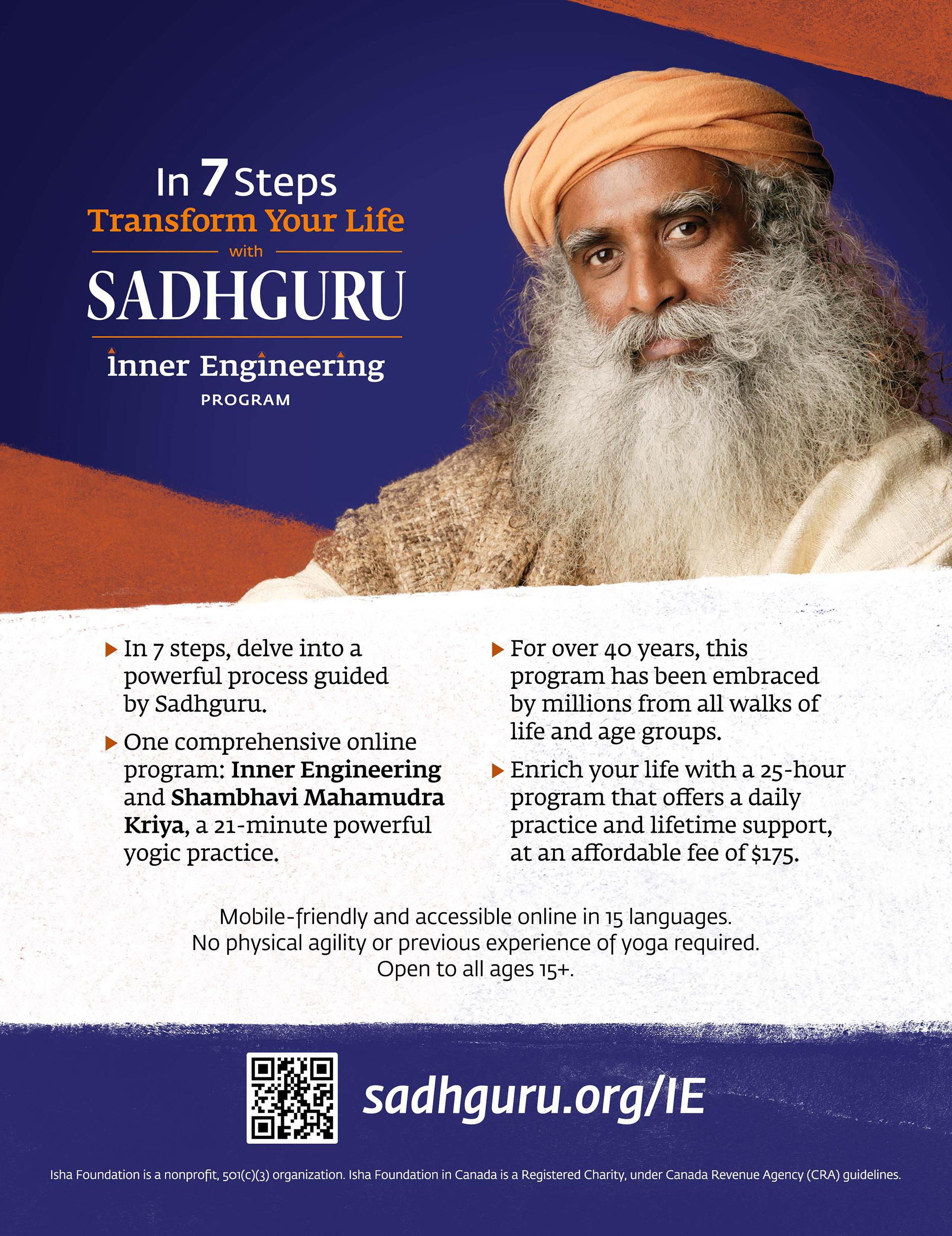


by Lauren Alderfer

The concept of intention is best described and used herein as a Sankalpa, a Sanskrit word that implies seeking the highest truth. A Sankalpa turns the heart inward. It is not driven by the ego to determine an aim or measurable goal.

Growing up in New England until I was 16 years old led me to see life through a Western lens. Finishing high school in France was my first jolt out of this preconceived way of knowing. From there, I lived and studied in Latin America as an undergraduate and graduate. I remained in the Andes for the next 20 years, immersed in a world of magic surrealism and indigenous ways of knowing—one beyond linear thinking of time and space. From there, the next 20 years on the Indian subcontinent were both a practice as well as a lived experience in Eastern wisdom and traditions. Immersion in the Tibetan refugee community profoundly affected my mindfulness practice: walking in the world grounded in deeper wisdom and more loving-kindness. Immersion in these distinct traditions eventually led me to the world of plant medicine…of the psychoactive kind. During COVID, I had a profoundly beautiful high-dose journey. This brought me to microdosing and becoming certified as a microdose coach. Microdosing can be thought of as an ayurvedic or homeopathic supplement.
It is a micro dose, usually a psychoactive fungi or plant medicine, such as psilocybin, that enhances well-being without hallucinations or impacting your ability to carry on normal daily activities. In both the high and micro doses, the plant, or in the case of psilocybin, fungi, was a powerful ally to access mindfulness. As a mindfulness author, I was encouraged to create a mindfulness journal to accompany my previous book. After months of contemplation, it only seemed authentic to offer a journal based on my own current lived experience: mindful microdosing. Thus, Mindful Microdosing: A Guidebook and Journal was born.
The journal highlights how the world of microdosing naturally aligns with mindfulness, as both cultivate a greater spaciousness of mind and expansiveness of heart for healing and well-being. Approaching microdosing with mindfulness and inviting microdosing to support more mindfulness lies at the center of the book. It invites readers of all ages, backgrounds, interests, and current lived experiences to consider the possibility of microdosing.
Microdosing: A Guidebook and Journal combines practical advice with reflective journaling prompts, making it accessible for both beginners and those experienced in the practice. The book’s emphasis on mindfulness and personal growth sets this guide apart, providing readers with tools to enhance their well-being and creativity.
Doing so mindfully helps you reap the benefits of mindfulness, which includes greater ease, positivity, mindful awareness, tolerance, focus, and connection to your own ground of well-being. All of these benefits enhance overall well-being. When microdosing or using any psychedelic medicine, it is highly advised to bring an intention to mind. In the Western mind, an intention is often specific and goal-orientated. In the Eastern concept, intention brings us to the Sanskrit word Sankalpa, which is heart-centered.
The excerpt I’ve selected from the book introduces the concept of Sankalpa and suggests how one’s intention can come from this deeper understanding. The idea of intention underscores all of Mindful Microdosing.
The concept of intention is best described and used herein as a Sankalpa, a Sanskrit word that implies seeking the highest truth. A Sankalpa turns the heart inward. It is not driven by the ego to determine an aim or measurable goal. A Sankalpa bubbles up from deeply listening to your most heartfelt desire. Invite in this deep listening. Nourish a calm abiding for your Sankalpa to become

clear. Breathe in its living message calling from within. Embrace its calling with deep trust. Though it may take a few days or even weeks, once your Sankalpa takes form, it is expressed as a short, affirmative statement.
The following are a few examples. I thrive in good health. I am present in all I do. Mental clarity guides my day. Joy abides in me. Ease flows through my pores and in all I do. I embody a loving presence.
Once you have your Sankalpa, and you may have more than one, hold your Sankalpa fervently and actively in your heart and mind. You can silently repeat it three times with the open invitation to repeat it to yourself, like a mantra, throughout your waking hours and in your dreams. Another all-important aspect of a Sankalpa is to believe that it, in fact, will manifest: that the force of the energy behind your Sankalpa has been firmly planted in the firmament, and its unfolding revelations will come into being. When mindfully microdosing, a magical alchemy between you, your Sankalpa, and the mushrooms are ever possible. What actually gets revealed is left up to an abiding trust that your heartfelt desire has been embraced.
Believe it will come into manifestation in all its perfection. Unlike a packet of flower seeds, for example, daisies, which you would plant in the garden with the specific intention to grow and bloom, a sankalpa’s alchemy mimics the biology of the mushroom. The spore’s nature is to instantaneously project outward, traveling in the air in all directions. Once it lands, mycelium forms and begins to grow its networks underground. These networks also expand in all directions, nourishing an astonishing array of life.
Some give rise to plant life that reveals itself above the surface, before your very eyes—including the daisies in the garden. This unseen, interwoven web, started from spores, is actively creating and mutually supporting gifts of abundant life in all its forms. Your Sankalpa can do the same. So let its energy be received and taken like the mushroom spore into open space and then take root in unseen ways, revealing bountiful gifts that enhance your life, nourish wholeness and well-being, and grow greater interconnectedness to all life. In this way, your Sankalpa becomes your guiding intention. I invite you to look at these unfolding revelations as a magical garden, one that you have started from a deep sense of your own heartfelt desire.
During your journey, you will most likely notice benefits as well as face some challenges. Some things will take root right away, while others decay and wilt away. Perhaps some challenges, such as health, relationships, or work-related issues, like weeds, lessen and may even start to be overtaken by daisies. However, some challenges may initially seem amplified, though your clarity in understanding them may deepen. Just like after a summer’s rain, more weeds may come to the surface, but the
soft, moist soil makes their removal almost effortless. Your garden’s growth is not a linear, step-by-step process. It is an ever-changing phenomenon of coming into being, ripening, and dispersing into other ways of being. This nature of impermanence can be held in awe and wonder. Likewise, revel in the way your unique journey will unfold. Hold the benefits like blossoming gifts in wonder while letting go of others with grace. All transforms into the beauty that is your life. Let your intention be the alchemy or magic, if you will, between you and the mushrooms in your journey ahead. Be sure to place your intention, written in a short sentence, into the Preparation section of the journal.
The intention may change as the journey proceeds, so feel free to edit or rewrite any new intentions. You may want to write them in the spores scattered throughout the journal. In this way, your intentions are gentle whispers from your heart and reminders of the magical alchemy of their manifestation. As part of their inherent intelligence, spores grow threadlike branches, called hyphae, in all directions; this is illustrated in the growing mycelial network found throughout the journal section of the book.
You may want to add guiding messages and insights or fill out each growing network with colors, words, or other creative inspirations. How they express themselves is part of the mystery of infinite possibilities and can find expression in the journal. Whatever you decide, the invitation is to co-create your own unique mindful microdosing journal in a way that is meaningful to you.


Lauren Alderfer comes to the world of microdosing and the use of entheogens through the lens of her many decades of meditation. She is the award-winning mindfulness author of Teaching from the Heart of Mindfulness. She also wrote the popular children’s books Mindful Monkey and Happy Panda. She blends a Western perspective with the deep spirituality of the East, infusing both in her personal and professional life. A long-time mindfulness practitioner, certified microdosing coach, certified End of Life doula, and IAYTcertified yoga therapist, Lauren has worked in US-based overseas schools for over 30 years and has been a professor in several graduate programs in the US.
She is an avid tennis player, thermal spring enthusiast, Tibetan and crystal bowl practitioner, and lifelong learner. Lauren holds a Ph.D. in Global Educational Leadership. https://www.laurenalderfer.com/.


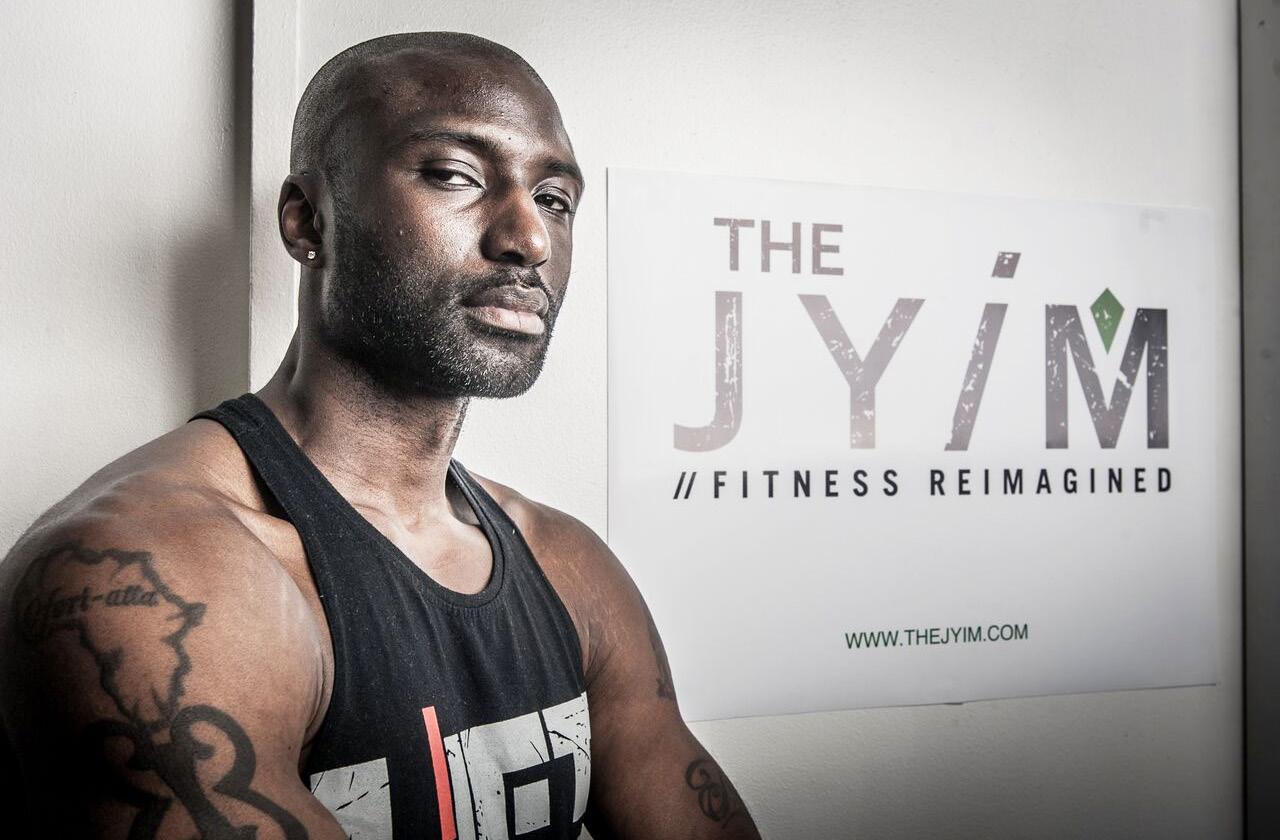
Ipromise I can still hear my father’s voice telling me to go check on my mother when I get out of school because she collapsed at work and is in the hospital again. From the time my mother migrated from Trinidad and Tobago, she eclipsed any version of hard work I’d ever heard, so seeing her overwork herself was standard. What came next when I got to the hospital would probably be weird for other people, but it was pretty normal for me. The familiar sound of laughter as she would try to convince the staff she was ok to leave so she could go back to work. Oddly, these moments were nothing short of an inspiration for me, and I still look up to her to this day. One thing I think we both learned over time is how to properly channel our obsessive work ethic into researching ways to accomplish our goals without working as hard. These lessons served as a catalyst on my journey as a wellness professional to discover a way to absolutely crush all of your fitness goals without killing yourself.
It doesn’t matter if you’re a professional athlete or haven’t found the motivation to commit to a wellness routine. When you master three things you will drastically improve the connection between you and your gut. It will make life much easier and give you a more effective place to channel your energy. My mother ignored her body but, more importantly, her gut because that was the only way she knew how to reach her goals. The same mindset of working out too hard or eating foods we don’t enjoy can also be counterproductive. We are bombarded
with so much information about what to eat and how to work out it’s hard to discern what’s “right” or “wrong.” It’s critical that we understand there is no “right” or “wrong”; only what is in alignment or not is in alignment. Once you are able to properly align yourself with your gut, it will be much easier to decide what approach is best for you.
During my college years as an athlete, I maintained a rigorous workout regimen of 2-3 sessions per day. Despite being in peak physical condition, I frequently experienced unexpected bouts of bloating. No matter how mindful I was about my diet, these episodes persisted. Even as my fitness journey progressed, I continued to encounter moments of bloating and low energy. I realized that merely intensifying my workouts wasn’t the solution. It was only when I started paying closer attention to my gut, rather than relying solely on generalized health advice, that I discovered certain food combinations triggered these issues for me.
This mindset shift towards prioritizing my individual responses to food and exercise was transformative. Encouraging my clients to adopt a similar approach yielded remarkable results. For instance, I learned that sweet potatoes provided abundant energy for one client but caused fatigue and bloating in another. Applying this personalized tracking and adjustment method helped my clients enhance their strength, conditioning, and even manage cholesterol and blood sugar levels. I advocate for experimenting with different approaches and trusting your gut to determine what works best for you.
Setting boundaries, both for yourself and others, significantly impacts mental health. We often start out motivated, only to be derailed by unexpected events like birthdays or work commitments.

1 - Choose Whole Foods You Enjoy and Energize You
Eating whole foods that you genuinely enjoy and that energizes you is crucial. Just because spinach, kale, or sweet potatoes are touted as healthy doesn’t mean they’re right for everyone. Whole foods are rich in micronutrients and offer numerous health benefits, but if you don’t enjoy them, they can negatively impact your physical and mental well-being. Take a week to identify whole foods that you truly enjoy and feel energized by after eating them. Whole foods are simply foods that are minimally processed and contain only one ingredient. It’s important to derive pleasure from your meals; lacking enjoyment can lead to low-level stress and disrupt digestion, potentially causing excess fat storage. If you struggle to find enough whole foods you enjoy, consider adding organic options with minimal ingredients. The process should not be stressful. Here are some whole foods I personally enjoy: sweet potatoes, mushrooms, avocado with sea salt, sliced peppers, apples, cashews, almonds, yams, pineapple, watermelon, and eggs. Additionally, here’s a list of organic foods with minimal ingredients that I find enjoyable: hummus, Ezekiel bread, almond butter, brown rice pasta, and oatmeal.
2 - Incorporate Enjoyable MidHigh Intensity Movement (Level 7-8) Include mid to high-intensity exer-
cises that you enjoy and engage your entire body. Your exercise routine should consistently challenge you at a level 7-8—demanding enough to push you without causing excessive soreness or pain. Avoid routines that are too easy and fail to challenge you. Exercise selection will vary depending on fitness levels and will evolve as you progress, but the goal is always to find your optimal intensity level.
• For Athletes: If you’re a seasoned fitness enthusiast looking to enhance workload or capacity, focus on increasing volume rather than intensity. Add more repetitions to your strength training or incorporate cardio before lifting to boost overall volume and performance
• For Beginners: If traditional gym settings or personal training don’t motivate you, explore activities that you enjoy. Consider learning a new skill such as tennis, boxing, martial arts, skiing, swimming, basketball, dance classes, pilates, yoga, or hiking.
• Recovery: Recovery is crucial for maintaining health and maximizing results. It’s during rest that we burn the most calories and build our body’s capacity. Incorporate recovery practices like ice baths, massages, yoga, and regular stretching into your routine to aid in recovery and optimize performance.

3 - Envision and Establish Daily Habits, Set Clear Boundaries, Celebrate Performance Goals, Forget About the Scale Envisioning who you want to become and aligning daily habits with that vision is key. Explore and create a lifestyle that resonates authentically with you.
Setting boundaries, both for yourself and others, significantly impacts mental health. We often start out motivated, only to be derailed by unexpected events like birthdays or work commitments.
It’s crucial to have a plan in place to maintain consistency. For instance, if a friend calls and suggests an impromptu outing, having a clear schedule already set for gym time or prepared meals makes it easier to decline or reschedule with clear communication politely.
Imagine this: Would you go to work if there was no compensation or recognition? Similarly, in our wellness journey, acknowledging progress is crucial. Forget about measuring success solely by numbers on a scale unless it’s a mandatory requirement. Instead,
Jyima is a Certified Personal Trainer, Certified Holistic Health Coach, and co-founder of The Jyim Downtown LA, boasting over a decade of experience transforming lives through fitness.
His innovative approach to training goes beyond the ordinary, employing a unique balanced training method that has proven effective for a diverse clientele, ranging from professional athletes to pregnant women and individuals managing chronic illnesses or physical pain.
With a passion for holistic wellness, Jyima seamlessly integrates his expertise as a Certified Holistic Health Coach, emphasizing the interconnectedness of physical health, nutrition, and mental well-being. https://coachjyima.com/
focus on rewarding consistency. For example, if you plan to hit the gym for five days and stick to your whole foods list this week, celebrate that achievement. Use a notebook, calendar, or app to track your progress, and reward yourself with a green star or similar symbol for each successful week.
Recognize that setbacks are a natural part of life. This is where boundaries come into play again. If the same friend calls after a challenging week, gently explain your commitment to consistency and suggest a rain check. This approach helps maintain clarity on your journey and keeps you aligned with your intentions.
Before embarking on your wellness journey, ask yourself a crucial question: Can I sustain this? Your answer should be immediate and confident. If a workout or dietary choice feels burdensome or unenjoyable, it’s only a matter of time before you lose momentum. Lack of adherence is the primary obstacle to maintaining any wellness routine. Trusting your instincts and aligning with what feels right can make progress feel almost instantaneous.



ATexas native, shares her story of grief after the loss of her husband, Michael James Jackson, caused by a wrong-way driver.
She is hopeful that from this tragedy in her life, something good will come in the form of a cell phone alert—the Michael Alert—that will warn drivers of wrong-way drivers and help save lives.

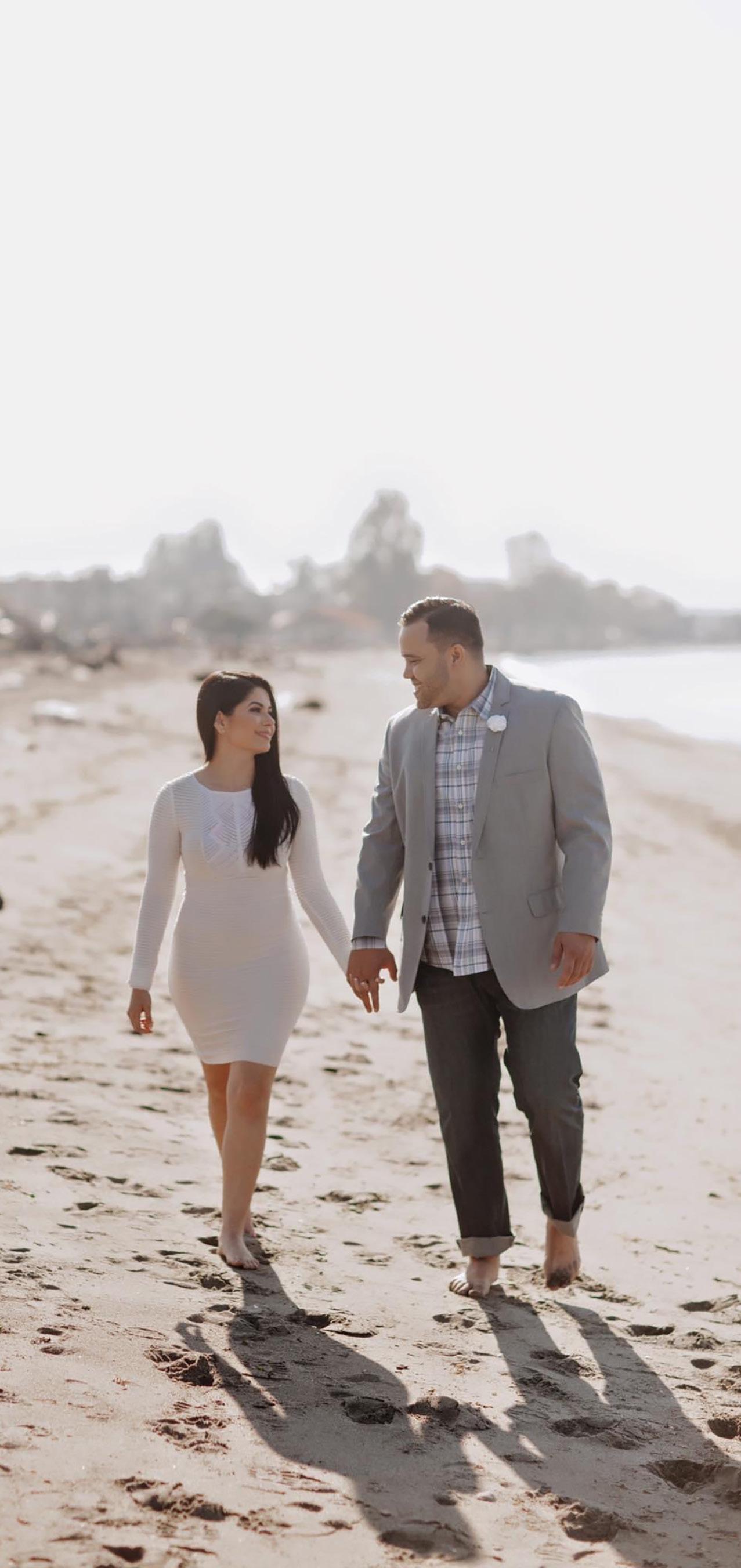

Where did you grow up, and where did you first meet your husband, Michael James Jackson?
I was born and raised in Dallas, Texas. Michael was born and raised in Seattle, Washington. He relocated to Dallas a few years we met in Dallas. We had mutual friends and ran in the same circles but never met, then one Labor Day weekend in 2011, we met and then became friends for some time before we started dating.
You worked as a teacher but grew up wanting to be an attorney?
Yes, I was a teacher. I went to college in Dallas, worked in legal for a few years, and eventually entered the education field. I mainly taught second grade for the first few years of my career. At the time I left teaching, I was a pre-K teacher.
But, yes, the entire time I was growing up and going through the school system, it was ingrained in my head that I wanted to become an attorney. But once I got into the legal field, took my LSAT, and went through all those hoops, I realized that maybe that wasn’t necessarily what I wanted to do. Then I got married, and wanted to be more present as a wife and a mother.
When I stepped away from my legal job, I wanted to have the flexibility of being a partner to my spouse but also be present not only for my spouse but for our children. I considered what other career would give me flexibility but also where I could feel like I was, in some way, giving back, and that happened to be education.
Do you feel that your passion for being an attorney prepared you for what you are going through now?
I met Michael when I was taking my LSAT. I was already working in legal, I had many colleagues in the legal profession, and one of my best friends was an attorney. I remember thinking, “You’re spending 18-hour days in the office.”
That was the key thing that kept me from pursuing Law. Now, having gone through everything that I’ve been through, it has crossed my mind.
Tell me about Michael. What made you say to yourself that he was the one?
That’s such a difficult question. You don’t meet many people and automatically click with them. When you first meet, you never think this will turn into a romantic relationship that will make you feel comfortable, safe, and understood. And yet, with Michael, that’s what it was.
Michael had a way with people where he genuinely cared. He didn’t have to know you for years to care about you. He would meet you and automatically have a sense of wanting to get to know you. He would motivate you and hype you up. He was a big promoter of everyone in his circle of friends at work, colleagues, and acquaintances. It was a no-brainer that he was the person I would end up spending my future with.
Growing up in Dallas and being of Hispanic background, Michael a biracial kid from Seattle, not knowing his father, and being raised by a single mom, in some way, I feel like he understood me because I was also raised by a single mom. He got me. It was so important that we could cultivate a friendship before dating. It didn’t take very long because he had a biggerthan-life personality. We dated for a few years before getting married.
Another thing I loved about Michael was that he loved his mother so much, which showed in everything he did. He left home and moved to Dallas because he knew he could do more for his mom by working in Dallas, where he knew he could provide a better life for her back home.
Tell me about Michael’s line of work.
Michael worked for AT&T corporate for almost 20 years. As I mentioned, he started his career in Seattle. As he rose in the ranks of his corporate career, he got an opportunity to relocate to Dallas. He often told the story like this: “I sold everything in my apartment, got in my car, and drove 2,000 miles to Dallas. I got here within a day, and I showed up to work on Monday.” His boss thought he was crazy.
He worked in technology, a very fast-paced career with much innovation. Every day, it’s changing. Michael had the biggest heart, and it showed through day in and day out with everybody he knew. I’ve been told that if you wanted to find Michael at AT&T, all you had to do was look out on the floor, and there you would see a crowd, and in the middle, you would find Michael. People gravitated towards him. His colleagues, acquaintances, and peers lovingly called him MJ.
Later in his career, he dedicated himself to using technology for social good. I think that’s a key thing to highlight because, on top of all the projects he had in his day-to-day career at AT&T, which were all very important, as he could save the company millions of dollars in revenue. He was even tapped by the CEO of Microsoft, Satya Nadella for a certain project.
What is the Michael Alert?
After Michael passed, it was so hard to find the silver lining. There were so many questions I asked myself, “Why did this happen? What is the purpose? “God, why him? Why now? Why this way?” He was a perfectly happy, healthy, a good person, and I’m not just saying that because he was my husband. You can ask anybody who knew him, and they will share the same sentiment.
Michael had this team of developers and engineers he managed for a few years. He called it the Carbon Team. A lot of them don’t live in Texas anymore. They’re spread out across the country. Since his passing, we had many conversations asking, “What would Michael want? How would he want us to live out his legacy?” For one, I know he would want us not to be upset because he’s not here in the physical sense. He would want us to, in some way, help ensure that this doesn’t happen to someone else so that other people, whether it’s a spouse, a child, or any family member, aren’t affected the same way our families and I have been.
I filed a lawsuit where I sued the establishment that overserved alcohol to the woman who killed Michael. A lot of investigative research was done. We learned that on the freeway where Michael was traveling, technology is in place. It notifies law enforcement and the Tollway Authority when a car is going the wrong way. However, what is not in place - and has yet to be developed in 2024 – an alert where you or I can receive a notification if someone is coming in our direction if we are in imminent danger. The evening Michael passed, that woman drove in the wrong direction for approximately eight minutes.
“ Working on the alert, feels like something bigger than I could have imagined for myself.
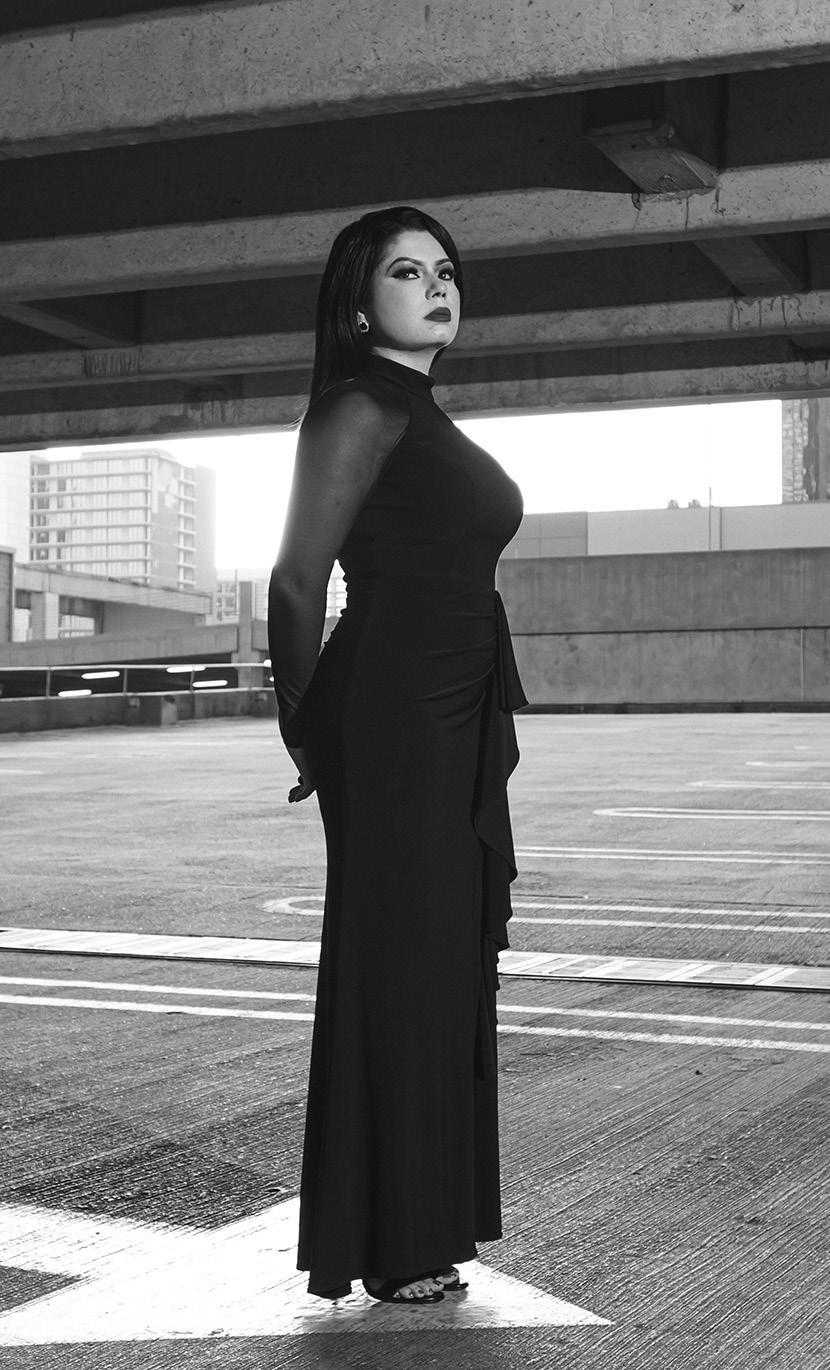
That’s a long time to be traveling in the wrong direction. The technology in place that detected her going the wrong way worked. All the neighboring jurisdictions, in terms of law enforcement, were notified that there was a wrong-way driver. The highway authority was able to see her going the wrong way. They could see what car it was, the color, the make, the model, all those things. The only people who didn’t know that there was a wrong-way driver were those in harm’s way, and one of those people happened to be my husband, Michael.
Now it is up to me to make a difference and speak for Michael. It’s through him that I’m able to wake up every day because if I don’t and if I didn’t push through, I wouldn’t be doing him any justice.
Do you have numbers for approximately how many people a year are killed by wrong-way drivers?
Yes. It’s shocking. Michael passed in 2022. We pulled stats for just my area, the Dallas-Fort Worth area, and learned that in 2021, there were 1.6 wrong-way drivers per day. It’s now 2024, and those numbers have been dramatically rising. I can only imagine what they look like today. That was four years ago.
The general public isn’t privy to that information. The only reason I know this is because of the lawsuit I brought forward. Otherwise, no one would know.
When did the idea of the Michael Alert system first come to you?
Michael passed in August, and the idea came about around November. I’d already filed the lawsuit, and certain things were coming out. I was going through
the process and learning many things about what happened that night, with specific details. I couldn’t believe she drove in the wrong direction for eight minutes. I couldn’t believe she was overserved alcohol at the bar.
There were so many things that went wrong that evening, and you realize that they could have been prevented. The highway authority has an office and headquarters where people like you and me sit monitoring the cameras. They’re watching all of this as it’s happening in real-time. There is live footage of her. She was moving at about 70 miles an hour.
Knowing that it could have been prevented, knowing that so many things went wrong, made me more aware of what I needed to do and that I needed to act. I’m so blessed to have a big support system, not only with family and friends but at his former company, with many people who are knowledgeable in technology.
Who was the first person with whom you discussed the idea? His best friend, Mike Linneman, who lives in Dallas. I talked to him and asked, “What can we do about this tragedy? What would Michael want us to do?”
I spent much time with Mike and his wife, Allie, every weekend and sometimes even during the week. He said, “Michael would want us to somehow, in some way, prevent this from happening to anyone else.” I said, “I know, but how?” He said, “It has to be some type of notification.” That’s when I said, “Like an Amber Alert?” He said, “Yes, just like that.” I can remember exactly where I was sitting when we had that conversation.
“
Michael had a way with people where he genuinely cared. He didn’t have to know you for years to care about you.

I was sitting in a parking lot on the side of the Dallas North Tollway. It was probably ten, eleven o’clock at night. Then Mike said, “Okay, we’ve got to figure out a solution.” That November, the entire Carbon Team came into town for our annual Christmas dinner. Michael used to do a Christmas dinner for his team every year.
And so, after Michael’s passing, I wanted to do the same for them. I invited Mike, and we took the opportunity to talk to each of the team members about the idea. They all said they would put their heads together and figure it out. It didn’t take very long. We figured out that currently, there are capabilities just like the Amber Alert and the Silver Alert. The Silver Alert is like an Amber Alert, only used for seniors - if an elderly person is in danger or goes missing. The Michael Alert would use the same integration system that allows the push notification to go out like an Amber or Silver Alert. If you or I are traveling on the freeway or a tollway and a wrong-way driver is coming in your direction, you would get the Michael Alert on your car. It would let you know that you are in proximity of a wrong-way driver, and you need to either go to your nearest exit or veer over to the right shoulder to get out of harm’s way.
With all the new cars and technology, most smartphones, iPhones, and Androids, have capabilities to be connect-
ed to your car, like Apple CarPlay and Android Auto. It’s so simple. The capability is there to push this notification and save lives. The design part of it is done, and the solution is done. The Carbon Team and I have met with local officials, state officials, and politicians. We’ve also met with the Departments of Transportation here in Texas. We haven’t necessarily gotten the support needed to get this proof of concept done. The first time we pitched it, I believe, was March of 2023.
Of all the people we have met during this journey, nobody ever told us, “This is a horrible idea. This will never work. This doesn’t need to be used.” At the same time, we never quite got the support. Only most recently, with all the media attention gotten by being featured on the local and national channels, one of the same Departments of Transportation reached out and expressed that they wanted to support and help us. That was only a few months ago, and we haven’t heard back.
Are most wrong-way drivers intoxicated?
Yes. The majority are intoxicated. In Michael’s case, several people saw her get in the car. I know this because it was all caught on video. They let her walk out, even though she was stumbling as she tried walking. Nobody cared enough to put her in a shared car, offer to drive her home, or make sure she was safe not only for herself but for those around her.

Did the woman who killed Michael survive?
No. She passed. I’ve been told that typically, when something like this happens, the drunk driver survives. When I got Michael’s death notification at my front door, one of the first questions I asked was, “Who is he?” Where is he? Is he in jail?” I thought it was a man. My mind was racing a mile a minute. The state troopers said, “Ma’am, it wasn’t he, it was she, and she also passed.” I was in shock that it was a woman.
What’s holding up the Michael Alert from becoming a reality? And what’s the next step?
The next step is finding the right people to support it, the right champions who care enough to get behind it, who are in the right positions to be able to pitch it and get it implemented.
As I mentioned, we met with TxDOT twice (Texas Department of Transportation for the entire state of Texas). The first time, they gave us the runaround and weren’t very supportive. We met with them recently, and they expressed some support, but we haven’t heard back. They’re the ones who can put it in front of the people who can get this pitched and get a proof of concept.
This is a time-sensitive issue. If this could happen to my husband, it can happen to anyone. People spend so much time in their vehicles driving on freeways in metropolitan areas. When a car comes at you at 70 miles an hour on the freeway, you need to know in real-time that you are in imminent danger.
Is it frustrating to know that those who should be jumping on board are not doing so?
Yes. The Department of Transportation says, “ Safety is our number one. This is what we do for a living. This is what our careers are.” I live 20 minutes outside of Dallas, and I have to get on George Bush Turnpike every day to get to where I am going. There is no alternate route unless I take surface streets, which take twice as long. I have to pay tolls to use that road. So, I am paying the State. And so, you would think it would be safe. The North Texas Tollway Authorities are the people who oversee the George Bush Turnpike. They’re the ones that oversee the same Sam Rayburn freeway. They’re the same people in charge of the Dallas North Tollway. They are the same people who had visibility and were watching as this woman was driving the wrong way for eight minutes.

They witnessed her car slam into Michael’s car. They’re the same peoplewho have given me the runaround. It’s extremely frustrating.
If you go to their website, it says that safety is their first priority from incident to clean up, whether it’s a blown-out tire, your car is stalled on the side of the road, or you have a medical emergency. I believe their average time is 16 to 17 minutes. However, that intoxicated woman was stopped on the side of the road for 55 minutes, and nobody went over there to check on her. And it’s all captured on camera by the North Texas Tollway Authority.
That woman could have been on the phone, having a crisis, or she could have had a seizure or fallen asleep. We don’t know. No one knows because no one went to check up on her! All we know is that at some point, she decided to turn her car around and start driving into oncoming traffic. Given the toxicology reports, she had more than double the alcohol limit in her system and that it was due to intoxication. And the North Texas Tollway Authority can’t be held accountable. However, if you go to their website, they claim that safety is their first priority.
And then there is also the pushback from the Department of Transportation, which has said things like, “Some people may not want to get the alert at 2:00 am.” And that’s understandable. Just like with the Amber Alert, you can opt-in or optout on your phone if you don’t want to get it. Realistically, who would want to opt-out when your own life is in danger? If you have children, you want to know if your child is coming home safely driving on the freeway. You would want to know.
So, there’s no turning back in your quest to make the Michael Alert a reality?
There is no turning back. It must
become a real thing. Michael’s passing can’t be in vain.
Do you enjoy cooking? Do you have hobbies?
When Michael was around, I used to cook—everything from American food to traditional Mexican food. I haven’t turned on the stove since he’s been gone. I also do Yoga and Pilates, and I love to read books.
Who has been your strongest supporter?
Family, Friends, and the Carbon Team have been my strongest supporters. And none of them are getting paid for any of this. They’ve taken time out of their busy schedules, away from their families, spouses, kids, and jobs, to be a part of something bigger than anything they have ever taken on before.
What do you do during your downtime?
I don’t have a lot of downtime. I’m busy with not only the Michael Alert, but I serve on a board at Michael’s former company, AT&T. There is now an award named after him for not only his years of dedication to the company but because of all the things he accomplished while there. In the history of AT&T, this has never been done before, and the award is nationwide.
We’re coming up on almost two years since his untimely death, and I go to therapy every single week. That hasn’t stopped.
Do you have a support system with family and friends?
I do. My mom and my sister are key to my daily life. Michael’s family is also present. They’ve been extremely supportive. My mom loved Michael like a son. She always wanted to have a son but had two daughters instead. When it came time for me to get married, she was over the moon, that she was finally getting a son.

Tell me more about the MJ Award. What qualities are you looking for in the recipient of this award? There are five big characteristics we look for.
1) Bold and fearless vision. Michael was bold and fearless. He would come up with crazy, outlandish ideas, but in some way, he would make them work. He was fearless because he didn’t care who he had to talk to or pitch something to. He would get whoever he needed to come on board to approve whatever it was.
2) Selfless and inclusive leadership. Michael was extremely selfless. He was a leader, everybody looked up to him, and he was very well respected.
3) Positive and uplifting presence. He was extremely positive. You never heard him say anything negative about anyone or anything.
4) Consistent willingness to go the extra mile. He worked hard. He even worked hard on his days off. He worked hard nights here at home. One person who currently works at AT&T is Lisa, she wrote me a sympathy card. It said, “We know how much MJ worked, and we know how much he sacrificed because he had such a good work ethic. We know how much he sacrificed time away from family and friends, even from you, Wendy. We thank you for sharing him with us.”
5) Creativity in the midst of chaos.
Do you lean on your faith for guidance and strength?
I was raised Catholic. Although I don’t go to church every Sunday, I am a firm Catholic believer. Michael and I got married in the Catholic Church. He was not raised Catholic, but when it came time for us to get married, he wanted to make me and my mother happy, and make his mom proud. He wanted to do things the right way, and he did it for me.
I do lean on my faith. In the early
months after his passing, it was difficult because I questioned everything, including my faith. I would ask myself, “Why did God allow this to happen to us?” You can’t understand it or make sense of it, and your mind goes into a dark place. But my faith certainly helped and gave me strength.
Once the Michael Alert is in place, will you return to law and continue your studies?
I don’t know, only time will tell. I toyed with returning to education, but I don’t know. Perhaps my line of work, my calling, might be somewhere else. It’s ingrained in me now because Michael always said, “I love that you’re a teacher. It’s such an honorable job, but Wendy, I feel like you are destined for something bigger.”
Working on the alert, feels like something bigger than I could have imagined for myself. I would’ve never dreamed that I’d be working side by side with his former team which he used to manage trying to save lives. I don’t have a technology background.
What is your biggest wish right now?
I’ve never been asked that question, but I think the answer is simple. I know my biggest wish would be people to become more aware of how their decisions and the things they do affect other people. That goes hand in hand with the alert and this tech initiative I’m pitching. Every person that we’ve met, every person that we’ve spoken to, whether they choose to support us or not, has some type of effect.
In the long run, it will become a thing. You will see the Michael Alert come up on your phone. The longer this takes, the more people will continue to die on our freeways. Michael’s life couldn’t be saved because there wasn’t anything in place like a Michael Alert, but we can make it happen. We can do the right thing. We can help save innocent drivers from senseless deaths. Michael’s death cannot be in vain.

By Faust Ruggiero, M.S.

Anger can brutalize your world. Have a plan to divert its negative energy before it takes over your life.
In a perfect world, you would not have to live with anger, and you would not have to put up with the people who made you angry. Almost everyone talks about what it would be like to live in a world where everyone loved each other, was helpful and cooperative, and always worked for the common good. Unfortunately, that is not the way the real world works. We live in an imperfect world with other people from all different walks of life. Sometimes, we get along well; at other times, not so much.
You may be working diligently to become anger-free, but this does not mean that the rest of the world is on the same page with you. Not everyone understands their anger, and not everyone admits they are angry. Also, even though you may have come to terms with your need to reduce anger in your life, not everyone else has. So expect other people and events in this imperfect world to continue to poke at you and get you angry. In this chapter, I am going to show you some strategies to deal with these people and events. I am going to be explaining what coping devices are and how you can use them in your imperfect world.
Middle Ground: Staying The Course Somewhere in the middle of your fight
or flight response lies an area where you can’t always beat someone up or run from them. Neither strategy seems to be the optimal way to deal with the situation. For example, you may be in a long-term relationship, and your significant other has that annoying tendency to do things that make you angry. You have tried to talk to them about it but to no avail. They don’t seem to care, and they continue to do those things that rub you the wrong way and have you on the brink of ringing their little necks.
You certainly don’t want to give in or enable their ridiculous behaviors, leave the relationship, and it doesn’t make a lot of sense to do physical damage. So, fight and flight aren’t exactly rectifying the situation. You are going to stay with them, and somehow, you have to survive their insolent, childish behaviors. So, this is where you call on your thinking machine to become your strategy machine. This is where you activate that territory that lies between hurting them and leaving them. This is where you learn how to use coping skills. What follows is a list of coping strategies that you can use in anger-provoking situations or when someone is doing something that can trigger your anger. Some of them are important to us as anger is developing or if you are in the throes of an angry episode. Some of the others can be incorporated into your daily routine to help you learn to be more relaxed routinely.
Develop a feeling vocabulary––By using words that help you describe how you are feeling, you can bridge the gap between your cognitive processes and your emotions. Use words like happy, sad, afraid, and any words that can help you describe what you’re feeling but also why you are feeling that way.
Imagine a calm place––A calm place is often used in programs like systematic desensitization. It includes thinking about a special place that helps you feel calm, like the beach or the mountains. Imagining that for a few moments can give you a short break from those angry feelings. In some cases, if you can remove yourself from the situation, the use of a calm place may last for several minutes or longer. Imagining a calm place helps to remove your mind from the angry moment and replace it with something that makes your mind, your emotions, and your body feel calmer.
Begin using a breathing deceleration program and use it regularly––Slowing your breathing down can go a long way in helping you to become a calmer person. Do breathing exercises as often as you can each day. They only take a minute or two, and you can do them almost anywhere. Exam-
ples of breathing exercises can be found online.
Do grounding sensory exercises––Grounding is the self-soothing technique. It’s usually applied in times of stress, which can happen when you become angry. Examples are using soothing objects like spinners and rubber bands or cognitive games like identifying colors. The more efficient sensory exercises consist of identifying more pleasant objects or people in your immediate environment and directing your attention there.
Exercise regularly––I have discussed how much of the anger you feel can be physical, so exercise is a great way to relieve the energy that can drive angry thoughts and episodes. Try to exercise regularly, but schedule an appointment with your physician first to make sure you are healthy enough to do so.
Relaxation Techniques––There are many relaxation techniques that you can use to help reduce anger. I have mentioned some, like meditation, yoga, and prayer. You can also use a program for the systematic desensitization I mentioned above. This is where you desensitize your entire body, one part at a time, systematically. You can find examples of this technique online.


Take a timeout––Sometimes, in the heat of the battle, it is difficult to find a pause button, that is, that little break from the anger you are experiencing. A great coping device is to remove yourself from the physical space where the anger is occurring if you can. This helps provide that little break that can help your body, emotions, and mind to reset and begin to detach from the angry episode.
Identify and respond––As I have mentioned previously, you can usually feel when you are about to get angry. At this time, you can identify that something is already happening. This is when your mind still has a bit of control over what is happening. This is where you can decide to do something other than get angry, like leave the situation or attempt to broker a solution.
Positive internal language––Anger is almost always accompanied by negative internal language. This often translates into negative and angry behaviors and, at times, violence. Positive language like “I am not going to let this bother me,” “I am better than this,” and “There are other ways to deal with this” begin to reverse the negative internal drive for anger and put you in a position for more intelligent thought and behaviors.
Set boundaries––Setting boundaries is something you do to help you avoid angry episodes. A boundary example might be I’m not going to remain in situations that cause me to become emotional or angry. I will leave those situations as soon as I
understand that I might get angry. If your boundary setting is applied to avoiding or leaving potentially angry situations, it can help you establish a plan that can be called upon when necessary.
Know When to Disengage––Everyone has a boiling point, and it is important to disengage; that is, remove yourself from the situation before you reach the boiling point. A boiling point can be the trigger that moves you into an angry episode, or it can be an identifier to let you know that it’s time to leave. Usually, past angry episodes are good boiling point indicators since you know what happened when you reached your boiling point in those episodes, and they can help you set your point of disengagement for potential future episodes.
Make the decision––A hallmark of human behavior is when we finally decide to do something. Then, we can take the appropriate steps to turn that decision into action. As simple as it sounds, deciding to stop using anger and being firm about that decision sets the stage for a plan to reduce using anger in your life.
Get help––One of the most important coping strategies to deal with your anger is to deal with it before it controls your life. If you are angry and have been unsuccessful in trying to reduce it in your life, professional counselors can help you address any issues that may be causing the anger. They will also help you learn to work with coping mechanisms along the way.
There are many types of anger. It should not be a surprise that attempting to use one coping strategy might fall short in your attempts to either hold back your anger or attempt to address someone else’s. There are so many different ways that anger can manifest itself in anyone’s life. Rarely, if ever, is there only one cause for anger in someone’s life. There may have been initial circumstances that caused the anger to develop, but along the way, it attaches itself to other life circumstances, so incorporating strategies to reduce anger should use a multifaceted approach.
For example, if someone is dealing with rapid anger, coping devices like timeouts, exercise, and getting help may apply. With the more passive forms of anger, like passive-aggressive anger, setting boundaries and positive internal language can be useful. The types of coping devices used often match the person’s personal history, their biology, the way they react and respond emotionally, and the processes that are forming the way they think. At times, a person’s spiritual attributes may be factored into which coping strategies to use.
Since anger is not a one-size-fits-all, each individual case might benefit from several different coping techniques. There is no general rule as to which techniques would apply to which cases. Everyone was created differently and has had a different interaction with their environment. So, the techniques being used to reduce anger in anyone’s life should be designed to have a maximum positive effect on their anger as that exists in their own lives. Angry expressions can cause severe damage not only to the person using it but also to the objects of their anger. The following example can help you understand how to use coping devices to help you reduce anger’s impact on your own life.
Working your way through angry undercurrents and current life situations can take some time. The undercurrents and the thinking and reacting that they produce, especially over time, can train the brain to use more angry techniques to settle current life situations. Using coping techniques to address the possibility of angry outbursts has two positive effects:
• They can be a stopgap measure to help reduce anger while triggers and pain emanating from past and current circumstances are being addressed.
• They can help you to create an improved style of life since your brain will accommodate the changes in the way you are thinking and behaving, and you can begin using these types of strategies not only to address anger but to enhance the quality of your entire life.
Keep the following in mind as you are trying to work with your anger. Familiarize yourself with the various types of coping skills. Discuss using them with someone close to you. Select two or three of them and attempt to incorporate them into your daily life. If you find this difficult, obtain help from a family member or a friend.
If you are still having trouble, schedule an appointment with a counselor who can help you to identify which coping skills may work best for you, and how you can efficiently begin to use them.
We can all learn to cope better with any situation in our life that can cause us to become emotional and react with anger. Coping devices are nothing more than strategies for healthy living. Sometimes the strategy is introduced in response to some negative circumstances we may be experiencing, but at other times, they can be incorporated into a healthy living plan. Your brain will adjust to the changes you are making, and if you stay consistent, you can expect the improvements you are looking for.

Faust Ruggiero is the award-winning author of The Fix Yourself Empowerment Series, The Fix Yourself Handbook, The Fix Your Anxiety Handbook, The Fix Your Depression Handbook, and the new The Fix Your Anger Handbook.


Welcome to Our Contributor Writers’ Neighborhood
By Jan Wakefield, M.A.

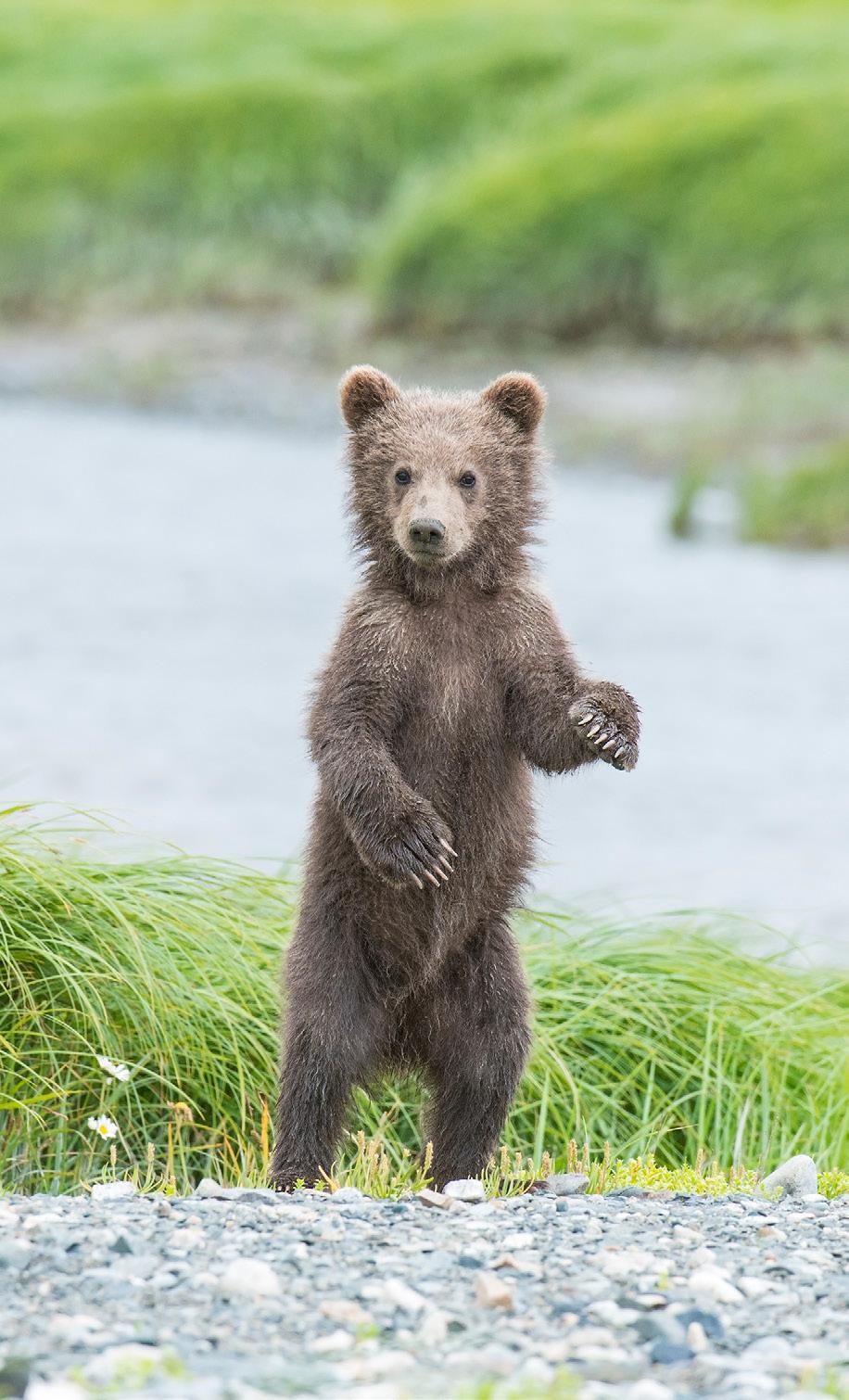


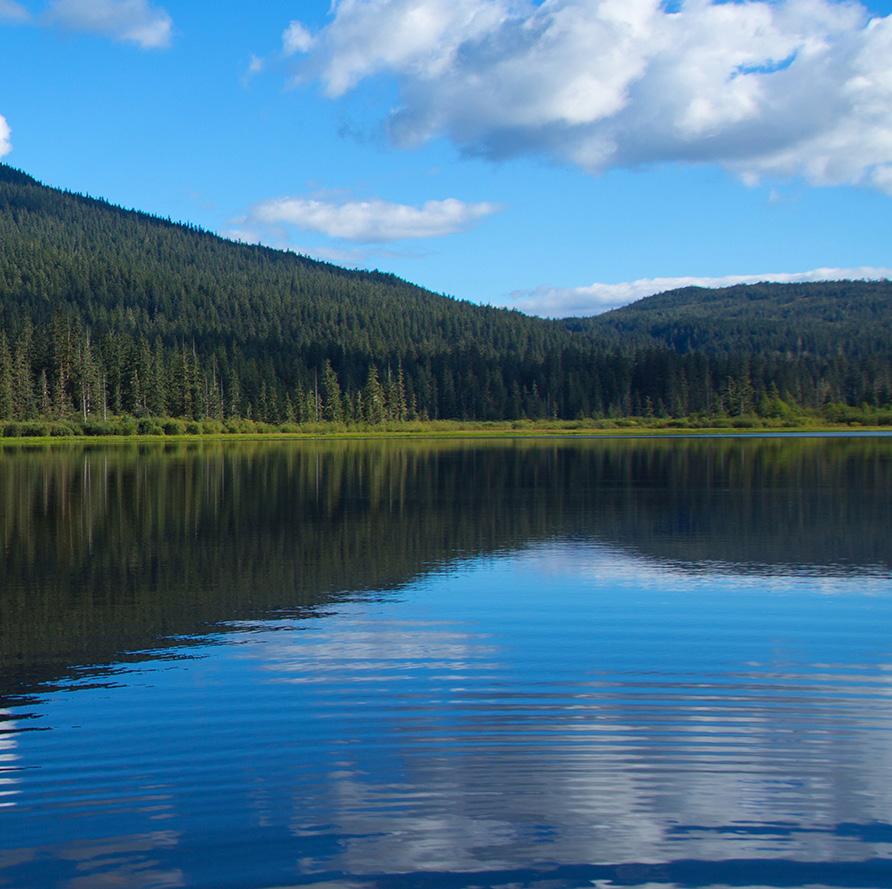
Embarking on an Alaskan cruise had always been a dream of mine, and the reality surpassed every expectation. Being from Hawaii, I was intrigued by the unspoken bond between Alaska and Hawaii. I did my research and discovered Alaska and Hawaii have just about nothing in common, except that shipping costs are higher or non-existent depending on the company, and everything takes exponentially to get to either. As the ship set sail from the bustling port of Seattle, I felt a sense of anticipation mixed with the thrill of adventure. The journey promised rugged but breathtaking landscapes, surprise encounters with wildlife, and a deep dive into the rich world of Alaskan culture.
In honor of giving me the full Alaska experience, the weather was as unexpected as the coastline. The sea was rough the first day. Brooding and thrashing against the sides of the ship, she welcomed us with a reality check about how powerful nature can be. Our first stop was Sitka, a charming town nestled between the mountains and the sea. The highlight of this visit was an aerial tram that whisked us up to the top of the mountain. As we ascended, the panoramic views of the harbor and surrounding wilderness unfolded beneath us, a verdant expanse dotted with the vibrant hues of wildflowers. At the summit, I was greeted by the sight of eagles soaring gracefully overhead, their wings cutting through the crisp mountain air. The experience was nothing short of magical.




Exploring the trails, I stumbled upon a wildlife center where I had the chance to observe bears in their natural habitat. Watching these majestic creatures roam freely was a humbling reminder of the untamed beauty of Alaska. The center’s guides shared insights into the conservation efforts aimed at preserving these vital ecosystems, enriching my understanding of the delicate balance between nature and human activity.
As the cruise continued, the ship navigated through the serene waters of Endicott Arm, offering a front-row seat to the awe-inspiring Dawes Glacier. The glacier’s towering ice walls glistened under the sunlight, casting a mesmerizing array of blues and whites. The ship’s naturalist provided a captivating narration, explaining the glacier’s formation and the ongoing process of calving, where massive chunks of ice break off and plunge into the sea with a thunderous roar. The imprint of my binoculars in my eyes lasted a full hour after I finally stowed them back in the case, and the rushing wind across my balcony
echoed the thoughts of my experience. No words, just pure awe.
In Juneau, I embarked on a kayaking adventure to the spectacular Mendenhall Glacier. We geared up with the hope that we would somehow stay dry. Paddling through the tranquil waters, surrounded by towering peaks and lush forests, was an experience that engaged all the senses. Our guide kept a rapid pace while telling us facts about the glacier and the surrounding area. She pointed out that the vast distance between the glacier and the visitor center was due to climate change.
When it was new, the visitor center was right beside the glacier, but now it looks lonely beside the mountain. The rhythmic sound of the paddle slicing through the water was accompanied by the distant call of birds and the occasional splash of a fish breaking the surface. As we approached the glacier, its immense scale became apparent, dwarfing everything in its vicinity. The ice, ancient and imposing, seemed to glow with an otherworldly light.

Back in Juneau, I was treated to a traditional salmon bake, a culinary delight that offered a taste of Alaska’s rich heritage. The aroma of freshly grilled salmon mingled with the scent of the forest, creating an irresistible invitation to indulge. As I savored each bite, I was entertained by a vibrant display of Tlingit culture. Dancers adorned in traditional regalia performed with grace and precision, their movements telling stories passed down through generations. The rhythmic beat of drums resonated in harmony with the chants, creating a powerful connection to the land and its people.
Throughout the journey, I was immersed in the traditions of Alaska’s indigenous tribes. The Tlingit and Inuit cultures, with their deep respect for nature and community, offered valuable lessons in sustainability and stewardship. Visits to cultural centers and museums provided insights into their history, art, and way of life. I learned about the significance of totem poles, each one a narrative carved into wood, and the intricate crafts-
manship of traditional clothing and tools.
The Alaskan landscape is a masterpiece of natural beauty, a canvas painted with towering mountains, expansive glaciers, and dense forests. Each day brought new vistas, from the rugged coastline dotted with islands to the serene fjords where waterfalls cascaded down sheer cliffs. The ever-changing sky, with its dramatic play of light and shadow, added to the sense of wonder and discovery. The cruise offered not just a journey through a stunning landscape but also a deeper understanding of the cultural and ecological significance of this unique region. It was a reminder of the importance of preserving these natural wonders and the cultures that have thrived here for millennia. As I flew home, and the beauty of Alaska disappeared from my view, I marveled over the ocean expanse between Alaska and Hawaii. The indigenous people of these lands took to the waters with bravery and spirit that shaped their unyielding connection to the land we all share on this beautiful planet.
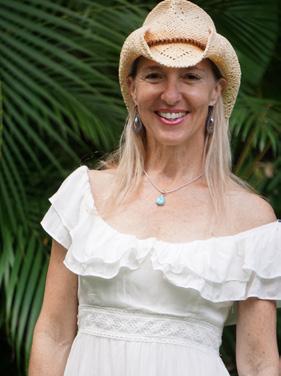
A lifelong traveler and educator, Jan Wakefield sees the world as a vast opportunity for expanding her understanding of the human condition. For her, travel equals transformation. Jan’s passion for travel and decades of experience as a personal transformation coach are the foundation for her international retreats, where people release who they once were and embrace who they want to be through meditation, relaxation, and a gentle return to self. In addition, Jan plans to visit all 195 countries in the world and share her experiences with readers and audiences worldwide. For more about Jan’s transformational retreats and programs, visit http://jan-wakefield.com
By Susanna Schroadter
Healthy relationships are one of the most important aspects of our lives. It is what brings us happiness, support, and fulfillment. However, relationships are constantly evolving in today’s modern world, and maintaining a healthy relationship can be immensely difficult. With stresses such as work, finances, and other responsibilities taking up most of our time and energy, many of us neglect the needs of our relationships and simply assume we are entitled to a good relationship. However, this is not the case. Good relationships do not just occur. They take work, effort, and desire.
One of the biggest threats to a healthy relationship is settling for
less. Picture this: You’re at a crossroads, knowing you deserve the best partner for a fulfilling life. But what if the person you’ve chosen leaves you constantly complaining to your friends? Day after day, year after year.
Often, we settle for less than we deserve out of fear of being alone or not finding someone else. As humans, we find safety in the known, even when the unknown could leave us in a life of abundance. This could mean we stay in a relationship that lacks communication, respect, physical intimacy, or emotional connection. While it may seem more accessible and safer to stay in such a relationship rather than face the unknown, settling for less can slowly deteriorate the relationship and our own happiness and ultimately lead to its demise.


Self-trust is not just a personal attribute; it’s a powerful tool that shapes your relationships. By trusting yourself, you can make more confident and fulfilling relationship choices, avoiding the pitfalls of settling for less.
Settling for less in a relationship can have detrimental effects on both individuals involved. It creates an imbalance where one person may feel unsatisfied, depleted, or unfulfilled while the other feels content with the status quo or with doing the bare minimum. This can create resentment, frustration, and even feelings of inadequacy. Over time, these negative emotions can build up and cause animosity as well as significant damage to the relationship.
It also often means compromising on important values and needs. This could include sacrificing personal growth, individual goals, or a sense of self-identity. By giving up these important aspects of ourselves, we may feel like we have lost a part of who we are or have become a shell of who we once were. This can lead to feelings of resentment and regret, which can also harm the relationship.
In order to avoid settling for less in a relationship, it is imperative to set high standards for yourself and for your partner. These high standards mean knowing your worth and not accepting anything less than what you deserve. It means communicating your needs and boundaries clearly to your partner and expecting both your partner and yourself to respect them.
Setting standards also involves continuously working on improving and nurturing the relationship. This includes actively listening, showing appreciation, and consistently making an effort to understand each other’s perspective. By setting these ex-
pectations early on, both individuals can work towards creating a relationship that is fulfilling and satisfying.
When individuals refuse to settle for less in their relationships, they open themselves up to the possibility of finding true happiness and fulfillment. By standing firm in their standards, they are able to attract partners who share similar values and goals. This creates a strong foundation for a healthy and sustainable relationship.
Not settling allows individuals to maintain their self-worth and sense of identity within the relationship. This leads to a stronger sense of self-confidence and overall satisfaction with one’s life, which, therefore, leads to a deeper sense of fulfillment within the romantic relationship.
“It’s not about finding the perfect partner; it’s about finding someone who respects and values you as much as you respect and value yourself.”
~ Unknown
Beyond settling for less, have you ever wondered about the crucial role of self-trust in your decision-making process and the dramatic difference it can make in building a life of harmony and contentment, both in and out of the relationship?
Self-trust is the foundation upon which healthy relationships are built. When you trust yourself, you’re more likely to make choices that honor your needs and values. This internal confidence acts as a compass, guiding you toward partners who will respect and cherish you.
Dr. John Gottman, a renowned relationship expert, aptly states, “Settling for less is an admission of self-doubt. When you trust yourself, the right partner becomes clear.” Trusting yourself means recognizing your worth and not compromising on it. It’s about believing that you deserve a partner who aligns with your values and aspirations.
Settling in relationships often stems from a lack of self-trust. Signs of settling include constant dissatisfaction, feeling undervalued, and compromising on essential aspects of your life and personality. This can lead to long-term consequences such as resentment, loss of self-worth, and emotional turmoil.
Esther Perel, a leading psychotherapist, emphasizes, “Healthy relationships are built on mutual respect, and that respect begins with self-respect.” When you settle, you undermine your self-respect, which in turn affects how you’re treated in the relationship.
Building self-trust is a gradual process, but it’s essential for making more confident and fulfilling relationship choices. A married couple I coached, Joe and Sandy, faced seemingly daunting challenges in their relationship. Both struggled with self-doubt, which led to frequent conflicts, as their insecurities caused them to feel constantly attacked and judged by the other. In order to attempt to save their marriage, they decided to work on building self-trust individually. Through coaching sessions, they learned to value themselves and to set healthy boundaries, both with themselves and with each other. Their relationship improved dra-
matically as they began to respect and support themselves and each other’s growth.
If you are struggling with trusting yourself and the decisions you make, there are steps you can take.
• Self-Reflection: Spend time reflecting on your values, needs, and boundaries. Understanding yourself better will guide you in choosing a partner who aligns with your true self.
• Set Boundaries: Learn to set and respect your boundaries. This is a vital aspect of self-trust and ensures that you don’t compromise on what’s important to you.
• Seek Support: Surround yourself with supportive friends and mentors who reinforce your worth and encourage you to trust your instincts.
• Practice Self-Compassion: Be kind to yourself. Recognize that building self-trust takes time and that it’s okay to make mistakes along the way.
Self-trust is not just a personal attribute; it’s a powerful tool that shapes your relationships. By trusting yourself, you can make more confident and fulfilling relationship choices, avoiding the pitfalls of settling for less. Remember, the first and most important person you must believe in is yourself. This belief will guide your choices in love and lead to healthier, more satisfying relationships.
As always, Lean into Love and Let Yourself Rise.

Susanna Schroadter, once a practicing attorney and mediator, has has turned her focus to creating Sage, a safe sanctuary to allow others to heal. She offers consulting and strategy for those going into mediation or dealing with life altering events so that they may be empowered and advocate for themselves. Once those events have occurred, she also offers different modalities for healing such as life and spiritual guidance and energy work.
https://susannalitchfield.com/
By Nikki Pattillo


No matter what religion or what “faith” is in play for each of us, we must strive to “place our heart upon” something of meaning, something that is true to us, or something we believe in.
In Buddhism, faith refers to a serene commitment to the practice of the Buddha’s teaching and trust in enlightened for, highly developed beings. Faith also may not only be devotion to a person but can exist in relation to concepts like karma and the possibility of enlightenment—an awakening to the true nature of reality.
Faith in early Buddhism focused on teaching and seeking wisdom and enlightenment. A faithful devotee was called an upāsaka or upāsika, a status for which no formal initiation was required. As important as faith was, it was merely a first step on the path to this wisdom and enlightenment. In the later years in Buddhist history, faith was given a much more important role.
In Pali, the language of the original Buddhist texts, the word for faith is saddha. While sometimes translated as “confidence” or “trust,” the literal meaning of saddha is “to place your heart upon.” According to the Pali, when we give our hearts over to a spiritual practice, it is a sign of faith or confidence in the practice of faith.
Practicing faith opens us up to concepts beyond our usual, limited, self-centered concerns. In Buddhist psychology, it is considered the gateway to all good things because faith sparks our initial inspiration to practice meditation, a practice of mindfulness.
In Buddhism, faith does not have God as the object or the foundation of trust. In this type of practice, faith does not require a belief in a personal God, as in Christianity. Faith, as trust, is not self-generated but arises out of the circumstances of one’s life—a sort of awakening to the faith of one’s spirit. Trust is the experience of the whole person and arises naturally as the true nature of human existence, we all depend on family, community, and nature, which support and enable our life process.
Faith can be considered as trust such as when a child trusts a father to catch them when they jump. Or, we trust the sun to rise each day. We trust the order of things which enables our life activities. Trust requires more than a belief in a particular fact, because one’s life may depend on our trust—it calls upon more from us and is more essential for living.

Faith involves a transformation of our approach to life and an awareness of the truth in our lives. Faith awakens us to our deep obligation in life, while energizing our commitment to the welfare of others. Faith, even when the root is different, is more holistic, involving the whole person.
Faith is also the awareness that we are part of a larger order of things, which, together, works to uplifting and fulfilling all beings here on our planet. Through such awareness of faith, we are able to live with compassion towards all beings and all living things.
The opposite of faith is doubt. There are many sides to doubt. There is a kind of doubt that is very positive. It is an edge of investigation that says, “I’m not going to accept this just because somebody else says it’s so. I really want to know these things more truthfully by my own investigations.”
Faith has the quality of allowing us to open, to draw near, and to go forth and
harness our energy to pursue a goal or an aspiration. But faith has to be carefully balanced with wisdom. If we have too much faith without enough wisdom, then it becomes what we ordinarily call “blind faith.”
Faith is a spiritual force, but it is not an isolated spiritual force. That means faith was never meant to work by itself. It must work in conjunction with other spiritual forces. That’s the way faith is. It’s not an isolated force that operates alone. Faith functions in harmony with the other spiritual forces that are set into motion, such as love, hope, patience, and prayer.
We recognize this basic striving as “faith,” and it is a universal part of being human. Even atheists have this kind of faith. Often, we hear that “faith is a gift,” and everyone has the gift of faith—that innate drive to seek meaning, purpose, and significance. Some people exercise this innate gift more than others, allowing their faith to be better defined than others who don’t use their gift.
No matter what religion or what “faith” is in play for each of us, we must strive to “place our heart upon” something of meaning, something that is true to us, or something we believe in. The meaning of faith can vary for each individual, depending on what we put our hearts upon or the quality with which we give our hearts. We must take a step back from our conditioning, from our past, and from our belief systems and then step forward to take a profound look within ourselves in order to allow the truth to speak to us in order to present whatever might be revealed through our own experiences. Be willing to be open, be willing to explore, be willing to investigate. Work with the systems that are true to you and have faith.
In order to deepen our faith, we have to be able to try things out, to wonder, to doubt. In fact, faith is strengthened by doubt when doubt is sincere, critical questioning combined with deep trust in our own right and ability to discern the truth. In Buddhism, this kind of questioning is known as skillful doubt. For doubt to be skillful, we have to be close enough to an issue to care about it yet open enough to let questioning come alive.
For faith to be alive and to deepen, we need to use our power to inquire, to wonder, and to explore a truth intensely for ourselves. This requires us to approach the practice with an inquisitive, eager, self-confident capacity to probe and question. It requires us to examine where we place our faith and why to see if it makes us more aware and loving people. To develop faith, we need to be open to the messiness, the discordance, the ambivalence, and, above all, the vital life force of questioning things
that cross our paths. If we don’t, our faith can wither. If we don’t, our faith will always remain in the hands of someone else, as something we borrow, but not as something we can claim fully as our own.
The process of interaction between faiths is more than a question of religious beliefs, concepts, or words. It also involves culture. Within each religious tradition, an understanding of life, values, and social relations has developed over centuries. In the United States, because of social and religious freedom, varying styles of life are now penetrating the host culture as never before.
Faith involves a transformation of one’s approach to life and one’s awareness of the truth for one’s life. Faith awakens us to our deep obligation to life, while energizing our commitment to the welfare of others as the foundation for living. Faith, even when the root is different, is more holistic, involving the whole person, while belief is simply mental assent to the factuality or accuracy of a given proposition.
When we explore the meaning of faith in Christianity and Buddhism, we discover that they both speak to the whole person in order to arouse commitment to promote the welfare of all beings. At the same time, they reflect differing understandings of the basis for that faith. We may use the term faith but it is necessary that we clarify its various implications to achieve greater understanding.
He who has faith has a reservoir of courage, hope, confidence, calmness and assurance that everything will be okay. By faith alone are we saved, by experience alone can we obtain faith.

Nikki Pattillo graduated from Stephen F. Austin State University in Texas and began her career as a clinical and molecular biologist. As a child, Nikki was psychic, conversing regularly with her angels and guides, but it wasn’t until she was in her 30s that she accepted her gift. She is now an international author with Ozark Mountain Publishing. She authored Children of Stars: Advice for Parents and Star Children, A Spiritual Evolution, A Day in Spirit: A Spiritual Calendar for Teens, and A Golden Compass. She has been featured on BRAVO and The History Channel and writes numerous magazine and newspaper articles to help raise awareness and consciousness of environmental and spiritual issues.

Extend the gentleness of your heart to the majestic elephant, for in its grace lies a reminder of the beauty of compassion
By Dulce García-Morman, Ph.D.
While we associate evolutionary theory with Charles Darwin, it is a topic that fascinated intellectuals for hundreds of years before the publication of The Origins of Species.
“Ideas aimed at explaining how organisms change or evolve, over time, date back to Anaximander of Miletus, a Greek philosopher who lived in the 500s B.C.E. “ (https://education.nationalgeo-
graphic.org/resource/theory-of-evolution/). Darwin’s work raised evolution to the level of a theory by developing the powerful idea of natural selection, commonly known as survival of the fittest. In a nutshell, organisms will produce more offspring than the environment can sustain, and only the best suited physically will survive. It also follows that as the environment changes, organisms will also need to adapt and change their survival traits. Although it sounds simple, the underlying processes of evolutionary theory are quite complex.
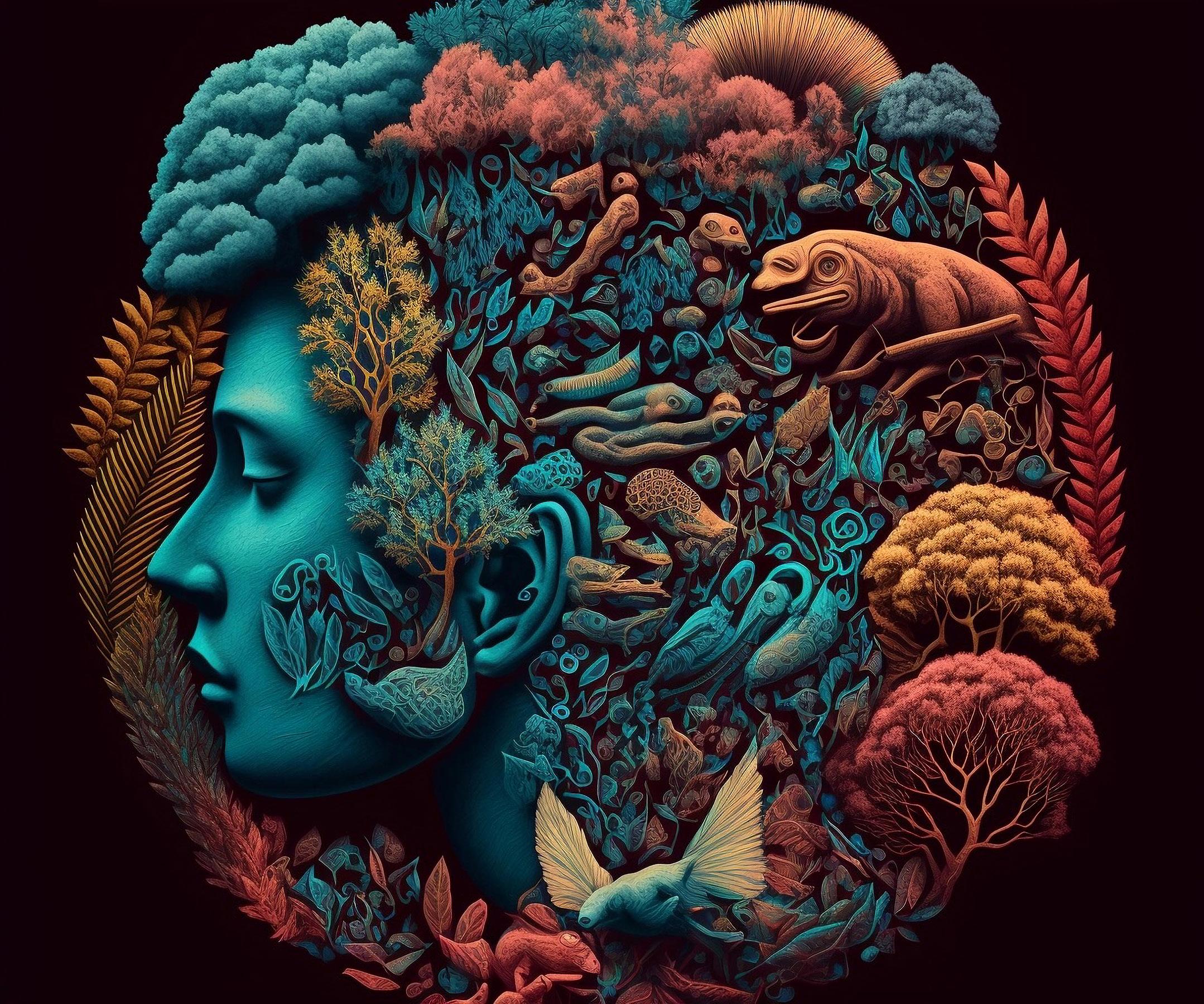

In recent decades, evolutionary reasoning has been integrated into multiple areas of study, such as culture and psychology. There are also various ways in which we can think of evolutionary transitions, including the ecological, biological, and philosophical perspectives. Fascinating examples of evolutionary transitions include things like the leap from single-cell to multicellular organisms, as well as the shift from non-linguistic communication to communication through symbolic language. However, one of the most fascinating applications of evolutionary theory is in the evolution of consciousness and the question of the transition between non-sentience and sentience.
The effort to define sentience is an ancient project. For example, Aristotle distinguished three types of “souls” according to their goal orientation and to which he assigned sentience. One was the nutritive-reproductive soul of nonsentient organisms like plants, the goals of which are survival and reproduction; the sensitive soul of sentient organisms, whose goals are the fulfillment of desires and appetites; and the rational soul of humans, whose goal is to satisfy abstract symbolic values such as justice and beauty” (https:// thereader.mitpress.mit.edu/how-didconsciousness-evolve-an-illustratedguide/). According to Aristotle, these “souls” are nested “in the sense that anything that has a higher degree of soul also has all of the lower degrees. All
living things grow, nourish themselves, and reproduce. Animals not only do that but move and perceive. Humans do all of the above and reason, as well” (https://faculty.washington.edu/ smcohen/320/psyche.htm#:~:text=These%20are%2nested%20in%20 the,above%20and%20reason%2C%20 as%20well).
Implicit in this description of soul levels is the evolutionary nature of sentience and consciousness. This “nesting” contains evolutionary leaps within its organization.
So, beyond evolutionary biology, there is the idea that a similar pattern may apply to consciousness, and Aristotle was on to something as far back as the 4th century B.C.E. when he wrote about the soul and sentience.
Before the heavens were made
And all the stars were placed We were ONE Inside God’s own heart Don’t you remember? -Mooji
I have always given much thought to the notion of evolution, and when I think of the great historical and cultural movements, I can’t help but see a link between those events and the evolutionary “instinct” that is wired in our DNA. I’m thinking of periods like the transition from the Middle Ages to the Renaissance, the adoption of Buddhism by the people of the mighty Mongolian empire, and the shift away from paganism with the adoption of Christianity. These cultural movements had a profound impact on the world of art, science, literature, politics, and religion. Some of these movements have been more or less peaceful and more or less chaotic, but they all have one thing in common: a break with old norms and symbols that had brought meaning and an embrace of new norms and symbols more aligned with a new, emergent sense of meaning. In other words, old ways of making meaning fundamentally evolved into new forms, and these refined forms and new symbols did not completely obliterate the past; they reframed it.
Thus, we can identify shifts in Mongolian society from feared physical warriors to spiritual warriors -you are still a warrior, but the expression is different. In the case of the Mongols, which I view as an extraordinary shift, the new generations continued to carry with them the ancestral knowledge of how to be a warrior, but now the enemy looked different -the ego became the enemy. And it was a free choice -no one forced Buddhism on Mongolia. The Mongolian psyche had evolved its “warrior.” Instead of conquering lands, they now set out to conquer the mind.
Underlying all these historical shifts, I see the primal biological drive of natural selection at work. It is as if the “natural selection” button turns on at different times for humanity, and entire societies adapt their be-
haviors to ensure the survival of the community. And this may be so ingrained and buried in our instinctual natures that we may not be conscious of that primal driving force. But if this is true, that we are biologically wired for survival and that our consciousness will evolve and adapt to ensure the survival of the species, it provides great comfort. If we trust evolution as a wiring that cannot be short-circuited, it restores in me the peace of mind that I frequently lose when I witness the chaotic state of our world. Embedded in the difficult social upheavals of current times is also an undeniable shift in consciousness that is responding to the evolutionary “alarm button”. Humanity has been making some bad choices for decades that are not sustainable for the long-term survival of the species, and we are seeing the consequences of climate change, economic disparity, shrinking of the social safety net, terrible warfronts, etc.
I believe that the angst and sense of urgency have reached a crescendo with most people on the planet -the evolutionary alarm button has gone off, and the pressure to correct course is intensely real. And I take comfort in that. I trust that, just like many civilizations before us, the evolutionary instinct will propel us forward -not into a perfect world, but a better one. I trust that the “biology that we are” will help shift our psyche and our spirit into a better way of walking on this Earth. Our biological evolutionary mechanism jump-starts our psychological and spiritual evolution, and we will innovate out of necessity. And one can only hope that love inserts itself into that innovation in a big way. One can only hope that the evolutionary alarm button awakens love and that as love awakens, it will frame the new symbols, ideas, and ways of being that will emerge in the new times that await us.
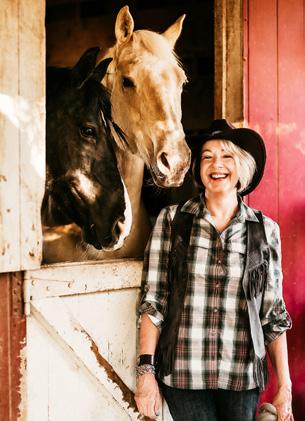
Dulce García-Morman, Ph.D. is founder of Life-Is-Art Equine Assisted Learning & Coaching. She has facilitated learning and therapeutic experiences through the horse-human connection for the past 17 years. Dulce’s practice draws from different wisdom traditions and is strongly oriented toward a Jungian approach to the restoration of the authentic Self.For more information, visit https://life-is-art.us/

Is this a part of the selfgrowth process?
I chose to call my column “Heartfelt Conversations with Emilie” because I wanted to hold conversations that can be uncomfortable and share topics that we tend to avoid or dismiss in the spiritual realm.
The path to healing while in our spiritual journey is not easy. Healing is the most challenging journey we can take but also the most rewarding one. We unlearn what we have learned and heal our deepest wounds to find our true selves. It is an incredible adventure that demands courage to challenge our pain and strength to gain self-mastery through self-inquiry.
It is a path that only makes sense to us most of the time. As we grow and get close to ourselves by letting go of what does not serve us, we can also experience the alienation and the firm opinion of those who simply don’t understand our choices and the path we are walking on. It can be challenging.
When I was diagnosed with a severe autoimmune disorder nineteen years ago, I had taken the pharmaceutical protocol given
by my specialist for a year until I decided to stop everything and find the root cause of this illness. I had an understanding that the physical pain was reflecting my emotional pain. It was scary because I was entering the unknown and challenging the white coat at the same time. I certainly needed cheerleading and support from the people around me.
Surprisingly, I did not receive the support I was expecting. Most of the people around me were questioning my choices. How could I make these decisions based on the books I was reading? How was healing my emotional wounds going to help me with treating my illness? How were taking natural supplements and changing my diet helpful for a disease that doesn’t have a cure?
Questions bombarded me, and every answer turned into more questions. I could feel that most people around me thought I was wrong and thought I had lost my senses from the world of body, mind, and soul connection brainwashing me. Someone close to me had even asked, “How could I be so irresponsible?” It became evident that the less I shared with certain people, the better. Slowly and organically, some people faded away and became nonexistent in my life.
“Everyone has their own path. Walk yours with integrity and wish All others peace on their journey. When your paths merge, rejoice for their presence in your life. When the paths separate, Return to the wholeness of yourself, Give thanks for the footprints left on your soul, and embrace the time To journey on your own.” – Unknown Author

My mother’s passing pushed me to deepen my healing as I faced my deepest wounds and felt despair. Grieving my mom inspired me to heal these wounds, and later on, I became a holistic professional. We may expect that our closest friends and family will support and understand our journey, but this can sometimes be far from the truth.
People can only meet others at the level they meet themselves. As we heal and evolve, we will naturally outgrow habits and activities that we once used to do. Our interests and focus will change organically, and our tolerance for what doesn’t serve us will be filtered. In other words, change will happen, and this is a part of the process of our spiritual journey. Such change can be very uncomfortable for those who are attached to the old version of ourselves.
I also firmly believe that we are the mirror of one another.
Have you ever listened to someone sharing their personal challenges with the solutions they found for themselves and thought to yourself that perhaps it was time to act on what was needed in your
life? I know I have done this many times, and I have experienced the same working with hundreds of clients over a decade.
Witnessing change in people can be inspirational or triggering for some, as not everyone is self-aware or ready to reconnect with who they are.
As we refer to conscious or unconscious breathing, people can be unconscious in life, but turning on the switch and becoming conscious is a choice that only we can make, and no one else.
I genuinely believe that it all comes down to the choices we make in life. Looking at ourselves on a deeper level, facing our traumas and conditioning patterns, and challenging ourselves to dig deeper all take tremendous courage and readiness.
Our spiritual journey is not a race. Each of us has a pace, and this journey is to be walked on our own most of the time. The waves have to be surfed by us. We all need assistance, help, and guidance, that is for sure, but creating change in our lives is our doing and no one else’s.
Looking for validation or understanding outside ourselves can be a challenge because not everyone around us will be able to fulfill the expectations we may have. Being compassionate towards ourselves will help us understand the people around us and allow us to hold compassion and understanding as we meet others where they are in their journeys.
Our transformation can initially be triggering and challenging because people are attached to what they know of us. With time, those who love us unconditionally and witness our happiness will come around, embrace our change, and may be inspired if they are meant to be around us. The ones who came into our lives to stay only for a season or to teach us a lesson will question our journey, try to guilt us, or simply and organically fade away.
It can be sad to see people fade away from our lives, but if they do, it is because they weren’t supposed to walk with us in the first place.
When we reconnect with our true selves and nurture a deep relationship with ourselves, we will no longer allow people to threaten our inner peace.
As we raise our vibration and energy, time and space will become precious treasures that are protected and shared only with those we choose to share them with.
It is called self-love and self-care.
I would like to leave you with one thing today as you read this article. The most incredible ad-
venture we can take on in life is undoubtedly finding who we truly are, and for that, we need to heal our wounds. This adventure is made of disappointments along the way, and it can be lonely at times as we face our shadows and deepest wounds.
Only some people will be our cheerleaders and support us in this journey of acceptance towards ourselves and others. Still, by reminding ourselves that people around us can only understand us through their level of awareness, they can only meet us at the level they meet themselves.
By watching people become less present in our lives and letting go of the ones who are no longer part of them, we also create space for new people to enter our lives who match our vibrations and energy and inspire and uplift us.
Be curious, venture, and leap onto this fantastic journey of self-discovery for yourself and not for others.
“You have no need to travel anywhere. Journey within yourself, enter a mine of rubies, and bathe in the splendor of your own light.”
~Rumi
Love and Light,

Macas is a transformational holistic educator, Reiki Teacher and trauma counsellor, mindfulness and Chopra meditation educator, certified life coach, author, and motivational speaker. Émilie has owned a private practice for over a decade. She continues to empower others to adopt a spirit of raw truthfulness, guiding them to their inner wisdom and empowering them to connect with their inner pharmacy.

By Polly Wirum

Notice where you have expectations that are driven by a fear of your well-being.
Do you struggle with finding peace in your relationships and life in general because of the expectations you have for yourself and others? Are you blocking the easy flow of energy by trying to control the outcomes in your life? Are you ready to embrace life with an open heart, free of controlling factors? Keep reading and discover some ways you can let go of expectations and bring more ease and enjoyment into your life.
My Story
I am now officially the parent of three young adult children. Each of our four lives has changed dramatically over the last couple of years, so our relationships have needed to evolve. The greatest shift came as I lifted expectations of what they would do and how it was supposed to be done. This was not hard for me
to accomplish. Be it a strength or weakness of mine, letting go and providing space comes easy to me.
I went from being a very involved PTA parent to sometimes feeling like a bystander in my children’s lives.
It was a dichotomy in our relationships and parenting style to go from day-today guidance and rules to an almost hands-off observation approach. Both sides of the relationship needed to recalibrate as everything shifted. We have mostly found our new rhythm, but I am sure that will change as we all grow older.
Experiencing a peaceful life, free of expectations, is like asking which came first: the chicken or the egg. However you get to peace or a life without expectations, the other will be there.
Identify your expectations and what area of your life is most saturated with these energetic blocks. Most of us have expectations. We expect the sun to rise and set, but we also have beliefs about our neighbors and most things in our lives. Notice where you have expectations that are driven by a fear of your well-being. For example, expect someone to give you a discount on a service because you live in a mindset of lack.
Identify where your expectations for yourself come from. Are you simply carrying on the expectations of past generations? Did someone believe you should dress a certain way or have a particular career? Possibly, someone expected a certain type of behavior from you, and your life is built around this.
Identify where your expectations for others come from. This is a great tool for parents. Do you find yourself expecting your children to accomplish things because you see your children as an extension of you? Expectations can be pushing for a high-profile career or the opposite, believing the person is not capable of achieving any success in life.
Identify the triggers that make you hold tightly to expectations. Most likely, you will discover that areas of your life that feel less stable and hold more fear are filled with expectations or other limiting beliefs.
Take a step back and notice where you could loosen your expectations. This is not dismissing the value of accountability of self or others, it is allowing life to flow within accountability and boundaries.
One of the best things about living with less expectations; is being comfortable in the unknown. This creates an amazing landscape that allows life
to flow, offering all sorts of choices.
Dream a little and play with the possibilities of what life might be; you can always choose again.
Living with less expectations creates a connection with the Universe where manifestation is easier. You will have more celebrations because unexpected wins pop up in your life like little treats to savor. There is less stress because you are not holding on and attempting to control an outcome. You will be more objective and not take things personally.
Can you have goals without expectations?
It is completely possible, and even healthy, to have goals and dreams that are free of expectations. This mindset allows your dreams and goals to shift, free of judgment, when life delivers opportunities that look different but feel just as good as your dreams and goals.
Allow inspiration and curiosity to fuel your dreams and goals. Tap into the feeling of what you are manifesting. Allow these feelings to generate your life path. Recognizing that life will bring opportunities for expanded ways of thinking as you move through life.
When you change one area of your life, like decreasing your expectations, it shifts energy in all areas of your world. I still see the potential and possibilities that I saw in my children’s youth, but now I celebrate that we are all living lives that inspire us individually.
Thank you for reading this article, and may you easily stay on the path that welcomes love and joy into your life.

Polly Wirum is a psychic, life coach, and writer. Years ago, she experienced a health crisis that led to a complete spiritual and life transformation. When she thought her life was crumbling, the universe was easing her grip on everything, distracting her from the truth. The healing helped her discover the beauty of a joyful and uncomplicated life. It is here that she connects with wisdom and magic. She shares this with her clients through life’s coaching psychic readings and spiritual retreats. visit Pollywirum.com
By Zee

In this ever-changing world of today’s conditioning, one presiding power has clearly marked out a path for its survival: Money. It now remains at the forefront of what is required for those humans who believe life functions within our home-made system. It seems we have come full circle from the time (1959) when the song “Money, Money,” That’s What I Want” first graced our ears and the immortal Pink Floyd (1973) “Money.”
The 1960s brought in a new light. It was an era of questioning who we are as humans. By the 1970s, the awakening for the generational shape-shifting of human consciousness began to elevate one’s mind. It was a time for Healing; Money was bad, Alcohol was poison, Meat became a dirty word, and Love was all there was. Vegetarianism became the flavor of the month. People somehow decided they were spiritual, with a little help from their friends. Unaware, the inexperienced fell victim to the changes, and our understanding of the status quo has been on shaky ground ever since.
During these times, the world experienced amazing growth, ideas flooded in, and the “find the niche” opened up countless cracks within the system, and a new set of green jewels was discovered. To this day, the potato peeler has been reinvented a thousand times and will be once again in the future. It will be built into our robo-kitchen helper. So, let’s take a look into how our dying-out big 3 managed to elevate their survival.
Knowledge has been an excellent entry level into the functions of this human creature. Did it go far
enough even up to this day, or did we get caught up in the flow currents and assume the tributary was the river? It’s an equal resemblance to a midnight-blues love affair gone horribly up the creek. Knowledge is the barrier to reawakening the original human consciousness. For now, we live in conscious sedation! So here we stand in our PJs, looking out into the blue yonder, asking the universe to fix it!
The push for human advancement down through the ages has always traveled in two directions. One path went across into the neighboring land mass, cultures, business, and thinking. The other path went internal, in search of where freedom may possibly exist. Throughout each of the different journeying pathways, both used the same set of defined knowledge limitations to acquire the hidden answers within the dual and non-dual. Someone should write a book.
Change will always come unexpectedly, knocking on your door. A twinge, a pain, a lump comes and goes with no apparent reason. A trip to your therapist or doctor finds no cause for concern. Under the fascia lays a vast world of the unknown, moving, flowing, and growing. Invincible are we as we move oblivious across time. Our feelings of knowing interact with careful precision as life is forever forgiving until it’s not. After pain takes the helm, it becomes an instant STOP SIGN for investigation, leading the physical into uncharted areas; one’s awareness experiences a different kind of being among the living.
What is it we know? Do opposites really exist? Only in language!
Life and death are with us all the time; We have learned how to define and respond to these two simple words from an early age. Humans are well versed in both their meanings and yet, what is their source of power that subdues one individual and on the other hand totally empowers another beyond comprehension? In order to fathom these silent depths, let’s explore other “words of opposites” who seemingly have equal invisible powers beyond their defined use in language.
Life, death, masculine, feminine, yang, and Yin are six words that have existed for thousands of years, and still, we know very little of their symbiotic lineage with one another. It is unfortunate that all 6 have been disrespected. Degraded into various human rants, which have nothing to offer other than one person’s logic over another. A frivolous quest engaged as a learning experience, with apparently no ending in sight.
While we breathe, Life and Death are always present. Natural law commands both to surface, retire, and then recycle. Yang is subdued by Yin so that it may invigorate what is required as they travel together along the Milky Way of infinite eternities. Masculine gives way to the Feminine through natural progression and vice versa. Having no connection whatsoever to society’s offensive Neanderthal behaviors and their complete lack of understanding for both essences.
SIX WORDS.
It’s painfully apparent that all six words are of natural ethereal essence and are beyond any physical definition or present understanding. Beyond the inappropriate dumped labeling given by self-unrealized intellectuals. Why do these, what’s that in your hand wannabe intellectuals continue to dump their archaic, deduced, toxic, and absurd educated rituals onto the human population? It remains nothing short of cowardice by humans
who have given their self-proclaimed oath, have legal authority, and have the power to intervene for humanity’s future.
Natural law dictates masculine and feminine cycles into each other. Allowing each to express their individual essence when it’s their turn to lead, navigate, receive, or counter-respond to experience. Then, it stands to reason that for some humans, only one of these essences is born active at the time of birth. The other essence remains dormant until, after experiences absorbed by the child, they require a newly learned response. Thankfully, it now appears there exists another alive symbiotic component aligning the masculine and feminine cyclic interplay that has no reference to gender, sex, or containment by human misplaced assumptions. Let the life dance continue.
Words may describe a thing, and yet a thing defined does not convey the essence of the thing or the words. A sadly long-lost piece of foresight by those who we look up to as genius!
Now, the understanding of an individual’s makeup goes out once again unencumbered across the unknown fields of creation into open waters to expand our existing knowledge of human individualism. We are fully incorporated multifaceted humans, extending far beyond the archetypes, personalities, and definitions encased by the limits of our thinking mind. Specialist ideas have ceased our human lack of expansion. Continuously through the ages, confusion has rained down on how to understand this human race fully. Detained by limited ideas that we are a singular being within this earthly domain. Bound and constrained by a societal structure is no longer valid. Never was!
Let life begin.










I tried the flor de Jamaica special agua fresca at my local taqueria one day. Made from dried hibiscus flowers, it had a deep red color and herbaceous flavor. It inspired this recipe, spiced with cinnamon, sweetened with agave, and spiked with lemon juice for balance.
Glass: Highball or Collins
Garnish: Mint sprig
28 oz/840 ml water
⅓ cup/13 g dried hibiscus flowers
1 cinnamon stick
1 oz/30 ml agave nectar, or to taste
Fresh lemon juice
Fresh mint sprig for garnish
In a small saucepan, bring the water to a boil. Remove from the heat and add the hibiscus flowers and cinnamon stick. Cover and let the mixture stand for 10 minutes. Strain the mixture into a pitcher. Add the agave nectar and stir well. Refrigerate until very cold.
To serve, taste the mixture and add more agave and lemon juice to taste. Pour into glasses and garnish with mint. Makes 4 mocktails.


Jennifer Newens is a cookbook editor, cooking teacher, and literary agent from Oakland, California. She received Culinary Training from the prestigious Culinary Institute of America in Hyde Park, New York. She believes everyone deserves a special drink in a fancy glass with a pretty garnish at the end of a long day – whether or not they choose to put booze in it!

My version of a Michelada blends tomato juice with Mexican-style spices, Worcestershire sauce, hot sauce, and beer. Have fun experimenting with different types of NA beer; I like a hoppy IPA, but traditionally in Mexico they would use a lager.
Glass: Highball
Garnish: Lime wedges
12 oz/360 ml chilled fresh tomato juice
12 oz/360 ml chilled nonalcoholic beer
2 oz/60 ml fresh lime juice
2 tsp chili powder
6 dashes Worcestershire sauce, or to taste
Hot sauce, to taste
Chile Salt (see below)
Lime wedges, for garnish
In a pitcher, combine the tomato juice, beer, lime juice, chili powder, Worcestershire sauce, and hot saucee. Stir to blend.
To prepare the glasses, sprinkle the chile salt onto a small plate. Wipe a lime wedge around the rims of the cocktail glasses, then dip the rims into the salt mixture. Fill the glasses with ice, then divide the tomato mixture among the glasses. Garnish with lime wedges. Makes 2–4 mocktails.
Mix together 1 Tbsp kosher salt, 1 Tbsp smoked paprika, and 1 Tbsp ancho chile powder.
This one-hour documentary’s title aptly describes the town of Surprise, Arizona, and the fantastic brass band whose members live and perform there.
The Desert Brass Band has been putting on shows in the West Phoenix area for 26 years, always to critical acclaim.
The band is made up exclusively of members of a retirement community. Thirty-eight musicians in their 70s, 80s, and 90s are getting together for one last push at the freedom and joy provided by music.
They all have fought their battles, literally in wars or metaphorically in their business or artistic careers, and have now reached that point where they can stop struggling and lean back. But they won’t. When others sit quietly in their rockers, this group rocks on.
Not for money. Not for fame. But simply because they love music. They give free concerts in churches, in retirement homes, wherever they are welcome –which is most everywhere. They also have special programs for special occasions, like Christmas, Veterans Day, and Memorial Day.
And now they’re performing for the world. One final act… if they can last that long.
The filmmaker, Mary Apick,‘s intention in making this documentary is to inspire people of all ages to follow their dreams, never give up, create, try to give back and pay it forward—in other words, to be like the members of the Desert Brass Band.
The documentary combines interviews and performances, with individual band members explaining how and why they undertook this adventure and what their family and friends think of it. And a five-year-old little girl, Abigail, with dreams of becoming a musician.
Mary Apick, the writer, Director, and Producer of the documentary, has won numerous international awards for her work in films, television, and theater. She happened upon the Desert Brass Band while visiting Surprise, Arizona. After hearing them perform and hearing some of their stories, she knew she had to make a film about this incredible and inspiring group. Mary has produced and directed projects for theater, television, and motion pictures. She also has a very successful career as an actress. Over the years, she has co-starred with Academy Award Nominees Edward James Olmos, Sally Kirkland, Paul Sorvino, and many more. She won a Best Actress award at the Moscow Film Festival.
She recently wrote, produced, and directed an animated film, “The Cat,” which was an Academy Award contender and won over 27 film festival awards, including in Toronto, Berlin, and Cannes. The Los Angeles Women’s Theater Festival awarded her the 2023 Maverick Award. The previous winner was Lily Tomlin. This year, Mary was one of the leading actors in the Pulitzer Award play ENGLISH by Sanaz Toossi at the Old Globe Theater in California with Great Reviews in the Los Angeles Times and many other publications.
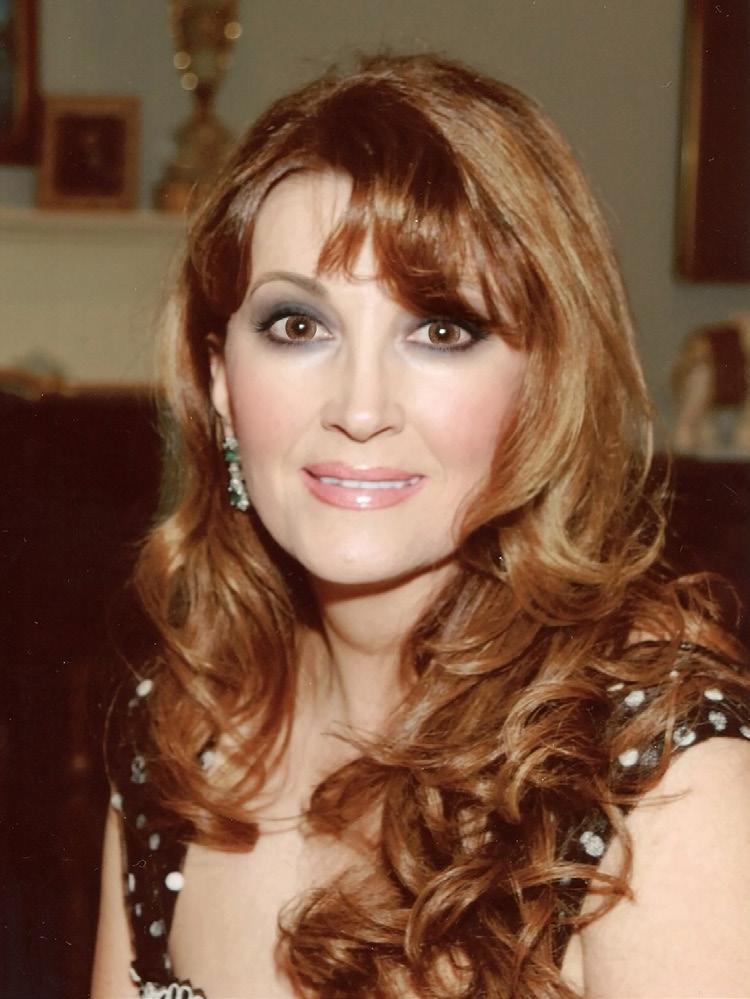


Can you share the inspiration behind “Jewel of the Desert” and what initially drew you to this project?
I graduated from the Tehran Conservatory of Music after specializing in piano, ballet studies, and Persian literature. Music has always been a big part of my life, mainly classical music. When I saw a performance by the senior citizen musicians who make up “The Desert Brass Band ‘for the first time at a church in Surprise, Arizona, I was hooked. These are men and women who have retired from all different walks of life, only to be brought together purely by the love of music. They will not go quietly into that good night. They perform in churches and community centers, both because of their love of music and a desire to inspire the younger generations. As an experienced filmmaker, I couldn’t help but make a documentary about them. The members are between 70 and 90 years old. And they’re great. Amazing
What were some of the most challenging aspects of bringing “Jewel of the Desert” to life, both in production and storytelling?
These outstanding musicians were very enthusiastic about appearing in the documentary. There are no actors in “Jewel of the Desert,” only real people I followed and interviewed, going to their concerts with my production crew from Los Angeles to capture the beauty of what they present to the community. I had an outline and synopsis for the storyline of the film, but of course, I had to divert sometimes because of what they would say or do and I added a new way to look at things.


The film features a diverse cast and setting. How did you go about selecting the locations and actors for the movie?
They are all real people with very different backgrounds. Some have been musicians all their lives. Some gave up music to pursue other occupations and life goals, only to return to their love of music later. They are all fascinating, from Air Force officers to schoolteachers, from housewives to Salvation Army executives. They made me realize even more how music can always bring people together. It’s an international language that inspires passion and creates connections.
What themes or messages do you hope audiences take away from “Jewel of the Desert”?
Never Give Up. Those are the three words that brought me to this project and what the audience should take from it. There is always hope; there is always more to do, even in the last semester of life, especially when you have music in your heart and can play an instrument.
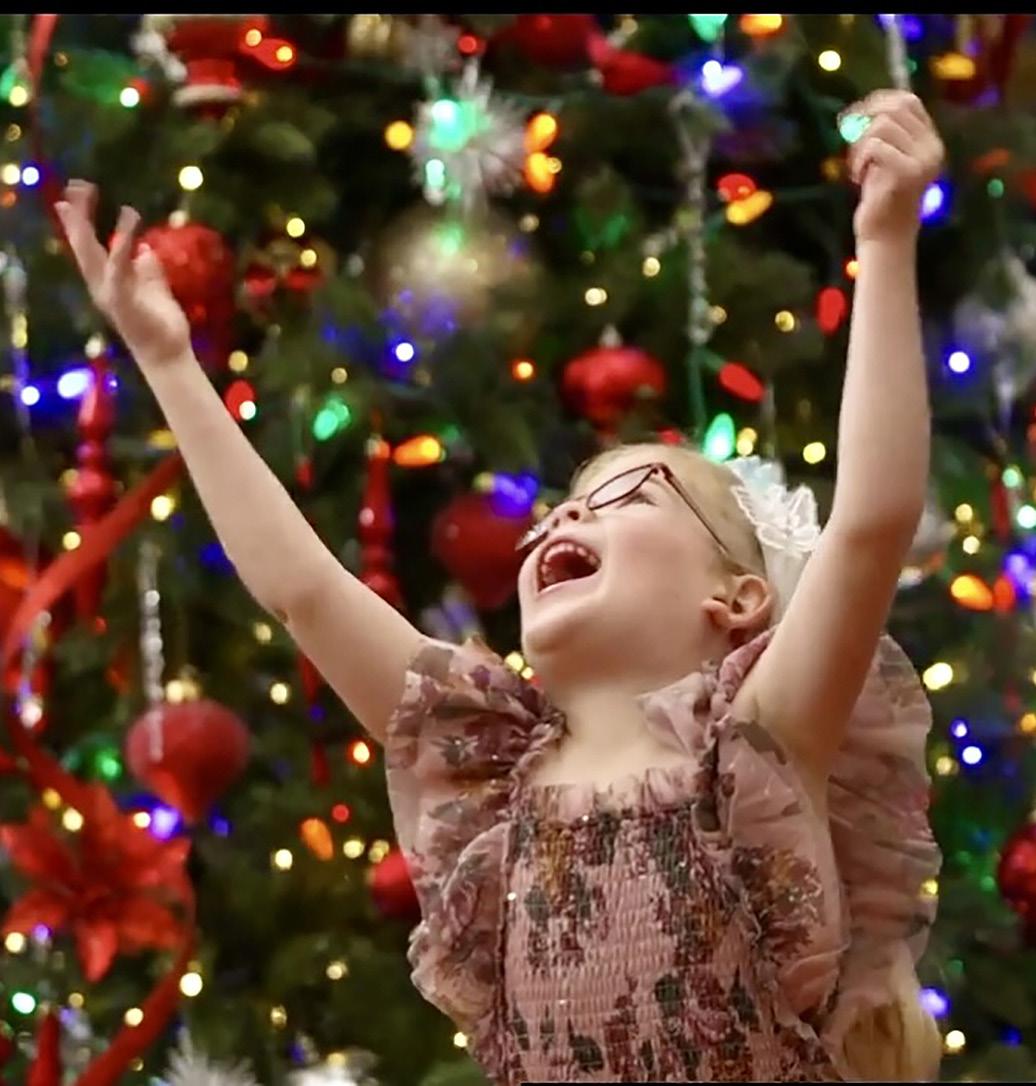

Can you discuss any memorable moments or behind-the-scenes stories from the making of the film?
The biggest moments were seeing the musicians and learning about them by hearing their life stories. It’s a truism that everybody has a great story to tell, and these people are no exception. Mike Vax is a legend in Jazz music, having played with “The Stan Kenton Band” for several years. Dan Reed was the Musical Director of the original “Love Boat” for 20 years. Colonels Terry and Linda Griffin are retired Salvation Army officers who served for over 43 years. Charles Musgrave, Maestro Conductor of the band, played professionally in the St. Louis Symphony and Philharmonic Orchestras. And Bill Fedor, founder of the Desert Brass Band, served in the US Air Force for 27 years and retired as Colonel. The little girl in the film, five-year-old Abigail, loves music, and filming with her was memorable. Her grandfather plays in the band. This was not a straightforward documentary to produce. There were many challenges traveling back and forth to Arizona, bringing in special equipment, coordinating schedules with the thirty-eight players and their families, and making sure not to tax the strength of these elderly wonders. But I am so glad I did it.


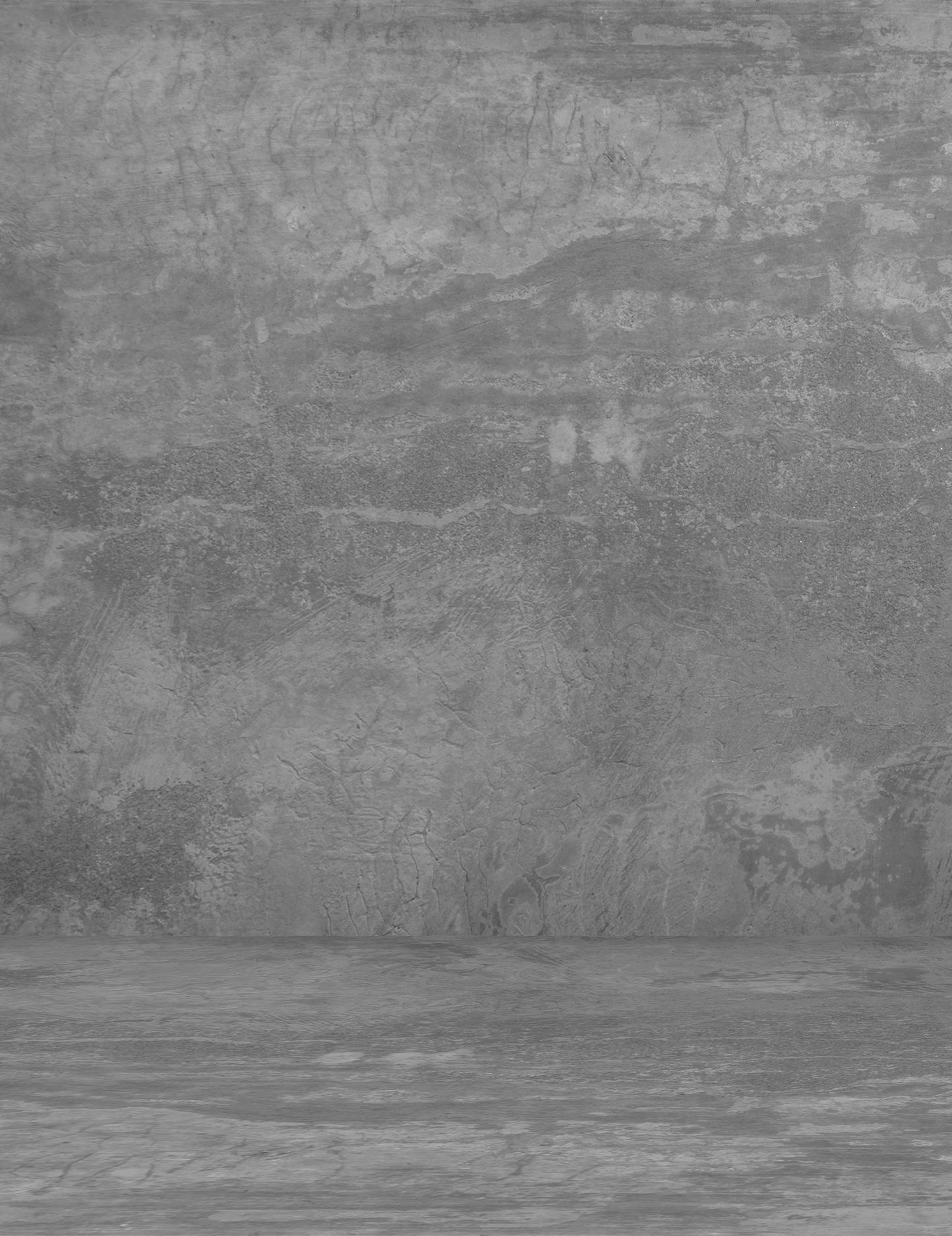
by Dorian Withrow
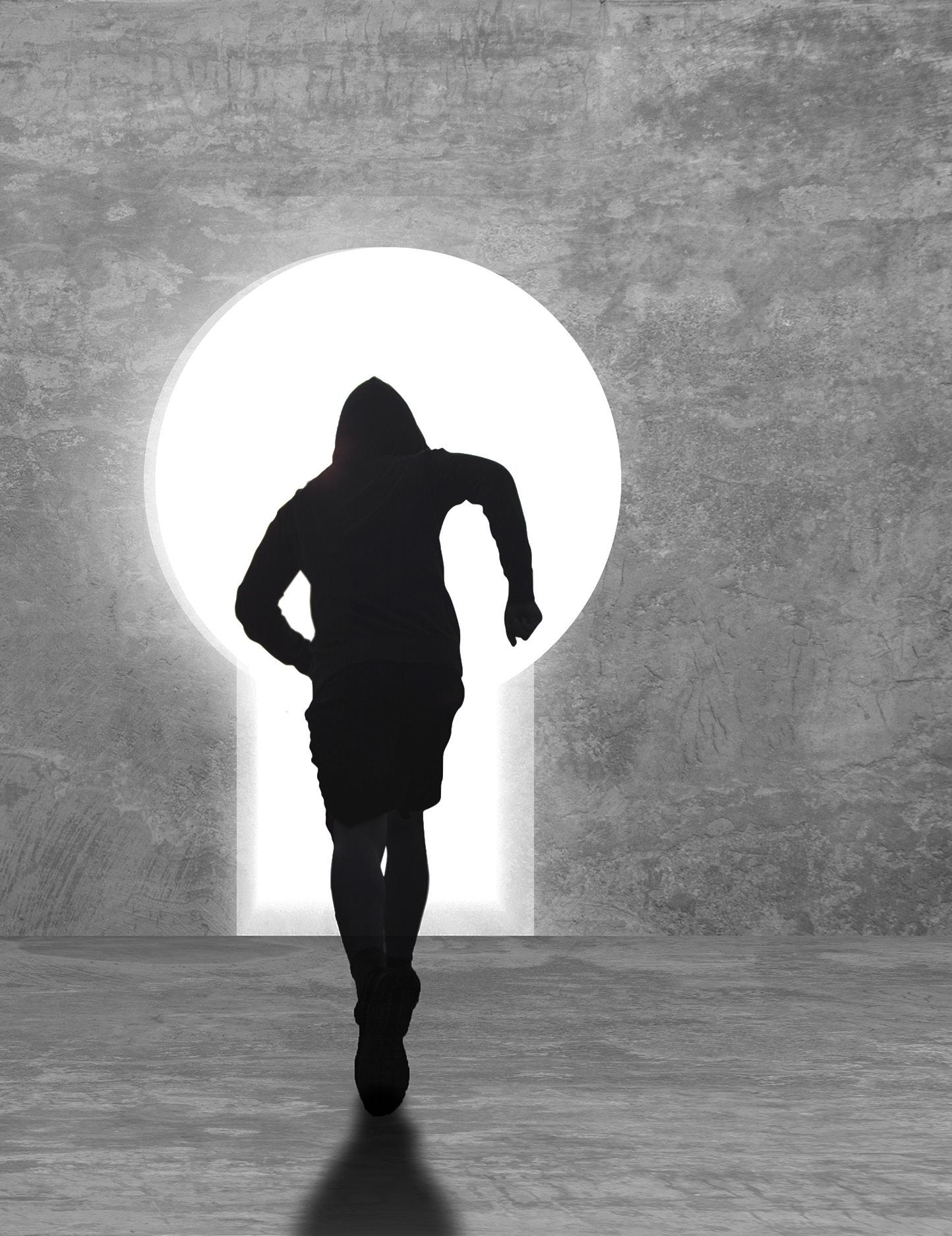

Put your achievements on display, however honorable or many you have; it does not matter. You achieved it, so let it empower you. Take pride and be proud of what you’ve accomplished.
Activities outside of work and school make all the difference for a peaceful day. If you have not found something that keeps you enthusiastic after a long day, I can help or at least help you recognize a path to get there. I have met people engaged in art. They make aesthetically pleasing portraits, desires, and crafts. We sway, pat, and swipe paintbrushes. I have met musicians who make the “thumb” of a drum, pull the stroke of a string, and hum the harmonies of hospitality. I have seen dancers radiate the intricate complexities our bodies can do. These people, all great in their respect, found their passion and talent. In regards to me, I have a few activities of my own that I engage in weekly. I enjoy martial arts, which has improved other areas of my life. As I talk about my journey, I want you to ponder the path you can take. What’s unique and specific to you?
I’m an I.T.F. Taekwondo practitioner, and I’ve been in love with it for a little over four years. Currently ranked an Il Dan, First Dan, or First degree. When I think back, it has been quite a journey. It all started with my grandfather taking me and my brother to the parks and waterfront for training. We learned essential kicks and punches, stances, and difficult movements. We had many laughs; my brother and I were told that karate used to be “back in the day.” When we finished, we usually ate ice cream or other food. Personally, my favorite
was vanilla. I enjoy cold blue, pink, and purple bubble gum flavors. On the hot summer days, it didn’t take long for the mixed colors to hit my fingers. I tried to catch every drop as if I was in a contest. Eventually, there wasn’t enough time to meet, and circumstances changed. After a while, I decided to start college and eventually get a job. I took the initiative to find a place to learn how to fight best. I found the Taekwondo school where I practice today. On the first day, I learned the class process and school norms; I was instructed to take my shoes and socks off before reaching a certain point after the building entryway. I placed my shoes and socks on dark brown wooden shoe racks. I placed my footwear on the shoe rack. Under my exposed dry feet, there was a geometrically grooved black mat. A few steps past the show rack is a doorway into the training floor, or dojang in Korean. I was instructed to bow as both my feet met the training floor.
We must honor our environment by showing respect for using it to improve ourselves. When we do this, we treat our space and ourselves differently, and we become comfortable in that space.
As I write this, I consider ways to respect my environment more. It can do a lot for my stress and stability. I was to say Yes sir, yes ma’am as a sign of respect, and of course, I received it back. A great lesson. What a difference that lesson makes for communication and respect.

People are much more excellent, open, and willing to help. It is not about a power struggle or who has more authority. Furthermore, I stand on the training floor. I am the odd one with no belt or dobok, a Korean word for training uniform. I view others with white or black dobok. The class was a mix of ranks. I saw some black belts with gold lettering and bars, green belts with blue lines down the middle, and red and blue belts with the same pattern as the green belt person.
The environment was enjoyable because it provided students with what they needed. For instance, the floors are light brown and cushioned with some traction. Traction is required in order to make training on our joints and feet easier. People were also less liable to slip. There are black outline squares spread out. The squares keep people in their individualized spaces for training or sparring. There are makiwara boards, essentially boards used to harden our tools (parts of our hands and feet) by the one big square pillar. In addition, punching bags are in the front right corner, wave bags are in the front left corner, striking equipment, and a dummy called B.O.B. mimics the human upper body.
There is even a peppermint scent diffuser. That is what it’s called. The diffuser is coupled with a water fountain, which adds some nice background noise. It is calming to me. On one wall
is a row of mirrors; above the mirrors are a row of flags of countries people came from to train there. Also, there are trophies at the bottom left of the dojang and encased belts in a row on the front wall. These components of the dojang make training much better. We could see this analogous to our environments at home. There could be a space to do our work, entertain, or relax. Set the environment up to be conducive to progress.
Please keep it clean; maybe you’d like some natural sounds and pleasant smells. Engaging smell and sound makes a space much more cozy. Put your achievements on display, however honorable or many you have; it does not matter. You achieved it, so let it empower you. Take pride and be proud of what you’ve accomplished. Make a monument for yourself. You earned it. Are things placed for their purpose? Should there be distractions in space meant for work? Should there be work-related things in a space meant for relaxation? Then, we must consider what we are doing in those spaces to keep our activities distinct. We are much more effective and mentally stable when we distinguish our spaces. To further illustrate this point, we do not go to a spa ready for paperwork nor go to work to entertain and play card games. (unless that is your job) Places have their purpose. I want to revisit the shoe rack. We are reminded about the importance of keeping our problems outside.
Our shoes collect all the dirt, dust, debris, gunk, and whatever else we step in throughout the day. We want to keep the shoes clean but leave the “dirt” outside. We keep the outside stuff outside. We do not bring divisive politics, news, bad vibrations, or negative attitudes. That stuff stays on the shoe rack.
Like the shoe rule, we have to remember to keep the outside stuff outside when we come home. We can disturb our peace and the peace of others when we lose sight of that lesson. Besides our environment, the people are also interesting. I have formed many relationships within the training floor. For instance, I met a fashion designer who did some fascinating work. I worked with her business to make a video for my commercial filmmaking class. I learned about her, the business, and the products.
We’ve become much closer since then. The activities or hobbies you engage in can help you achieve your goals outside of it. You have the chance to increase your social capital and build meaningful relationships. More opportunities come as you build experience and knowledge in what you are engaged in. I have the privilege of helping other people become the best version of themselves. I have the opportunity to teach and give advice. I can correct mistakes and pick people up when they fall. People even take the time to help you. I like to walk to the dojang, so people often drive by and offer me rides. Walking has its beauty. It is suitable for your physical health, of course, but there is a mental aspect to walking as well. You become much more in tune with your body and how well you’re doing. You also have the fortune to see two four-legged, fluffy-tailed creatures chase each other. You can feel the wind dance on your skin. The light from our gigantic, galactic fireball may coat your skin like tight cloth-
ing. If you’re lucky, you feel and smell the water coming down from the heavens to wash you. I carry an umbrella; getting wet isn’t so fun sometimes. As I walk, there are moments when I take everything in and appreciate it.
I absorb the environment around me through my senses. It is therapeutic because of this mindfulness element. I do not worry about what happened in the past or future. I am just present.
To me, martial arts also provides that in many ways. Lastly, capabilities are dormant until we explore something that will break open the door of exploration. We only know what we are capable of once we do it. I am doing all kinds of cool spinning kicks. I hit with so much speed and power in my punches. My weight drops and my flexibility improves. I could only have gotten to this point by starting and sticking to it. Moreover, I have a small story about my art experience on my birthday. I took a small paintand-sip class. I did no sipping and all the painting. As I started, I was nervous about messing up and had terrible ideas regarding my art capability. I have not painted in years; the last time I did, it was a handprint on my elementary school wall. I followed directions, and the instructors constantly gave me advice and reassurance.
It makes a difference in blossoming through creative processes. As time went on, I felt like I was walking a tightrope. I wanted to mix the right paint or brush correctly and in the right direction. As time went on, I saw the development of my painting and grew with confidence. As I finished, I saw that mine differed from others, which is valid for everyone in the room. Looking at it now, I think, “What a masterpiece?” I could not see it, but I never did!
The painting was uniquely mine. I did it to the best of my ability. I did well.

Dorian S. Withrow Jr. is an accomplished author and personal growth monger known for his remarkable insights into the approach to modern self-improvement. With a background in Philosophy (ABEC), Animal Behavior Ecology and Conservation, and mental health, Dorian combines his knowledge to offer fresh perspectives on achieving milestones in everyday life. He has five books in various writing styles: dialogue, poetry, short stories, and essays, in addition to approaching different genres like poetry, personal growth, and interpersonal relationships. His literature has taken place in six countries. He has received notable rewards such as the Martin Luther King Award for community engagement, promoting harmony, and growth. He also received The St. Thomas Aquinas Reward for philosophical excellence, distinguishing him from his entire graduation class. Dorian’s work encompasses helping people make changes within themselves to prosper in their prospective life paths. Dorian enjoys experimenting with holistic wellness practices.

“Animals Have Souls Don’t Put Them in Your Bowl”
